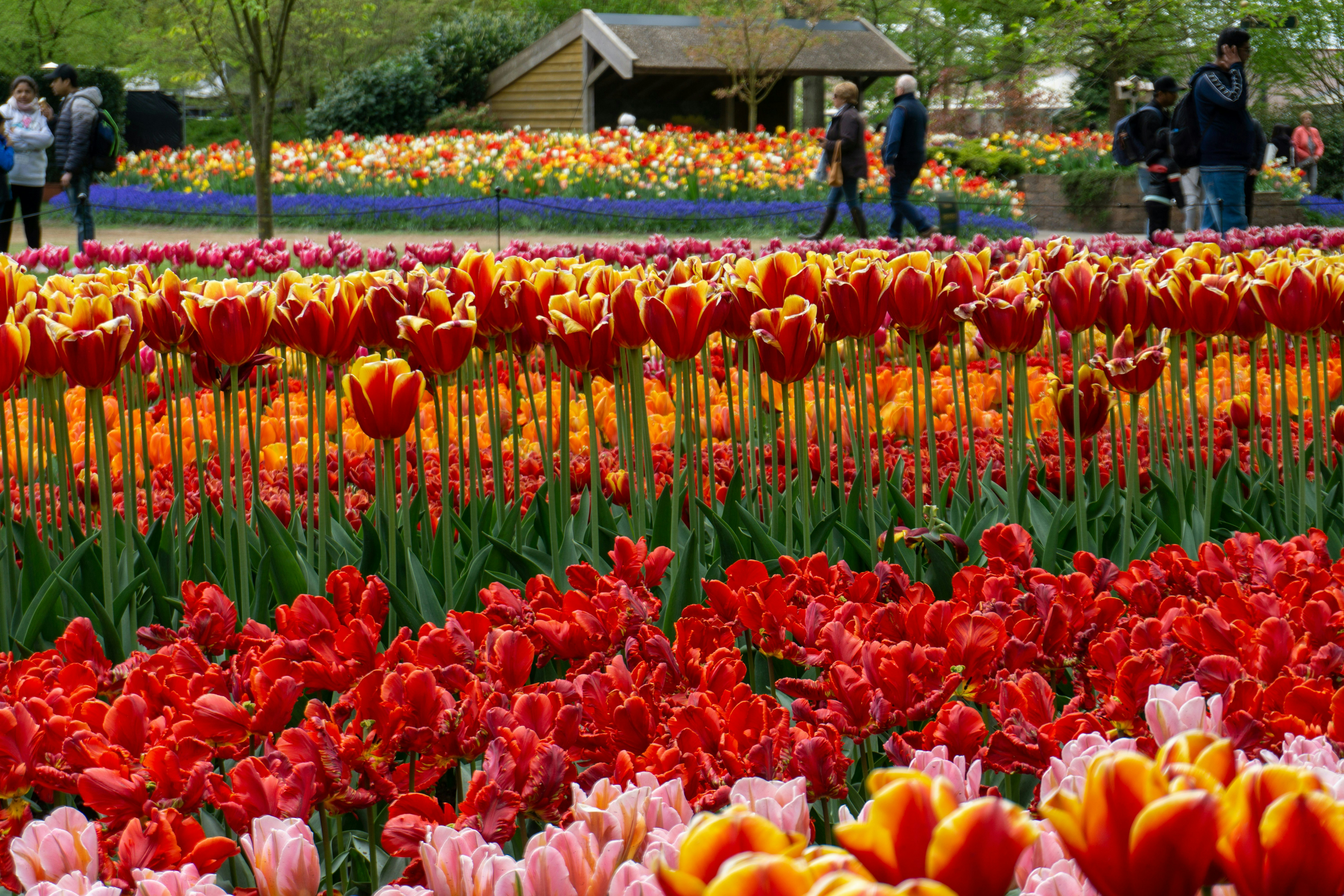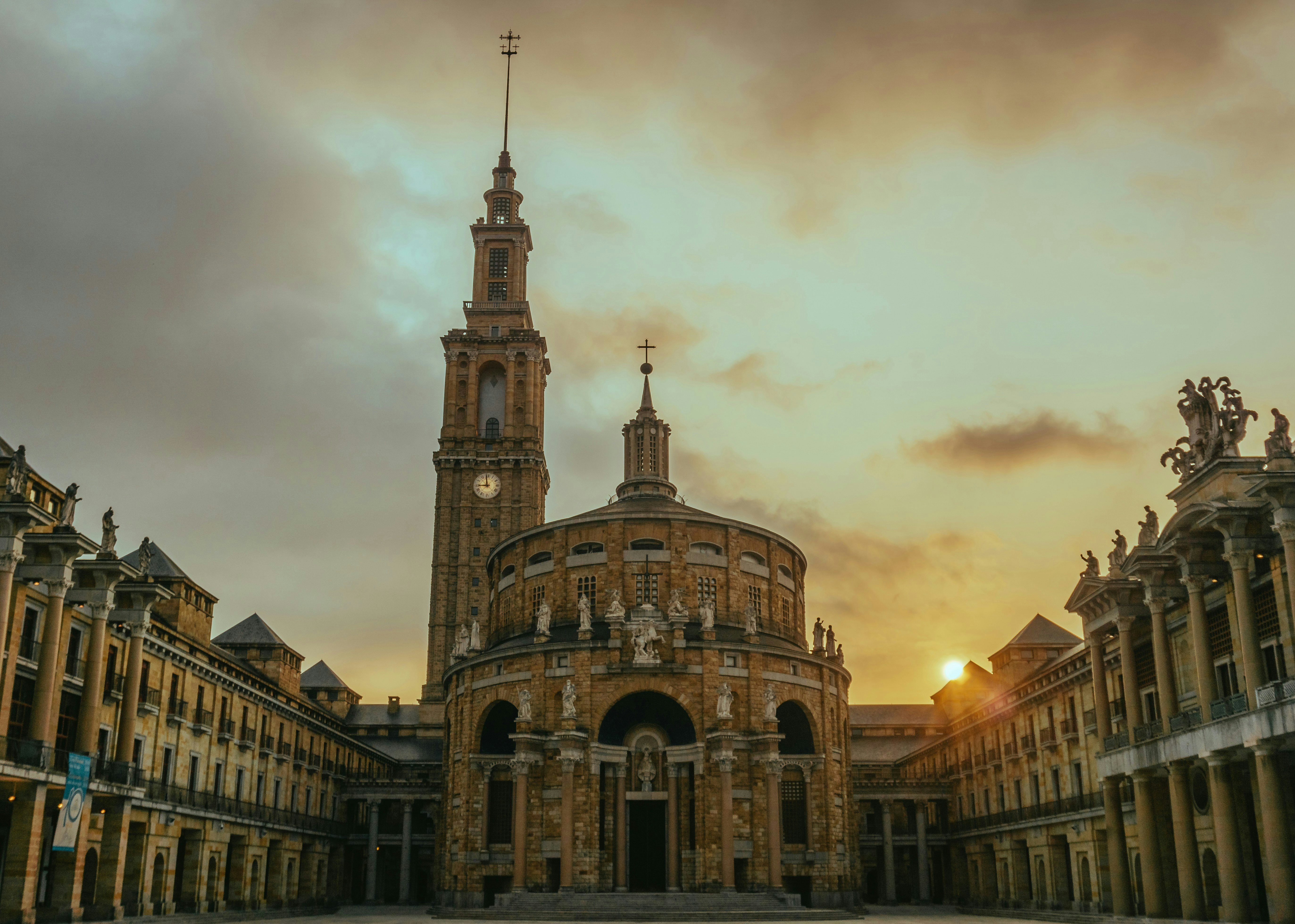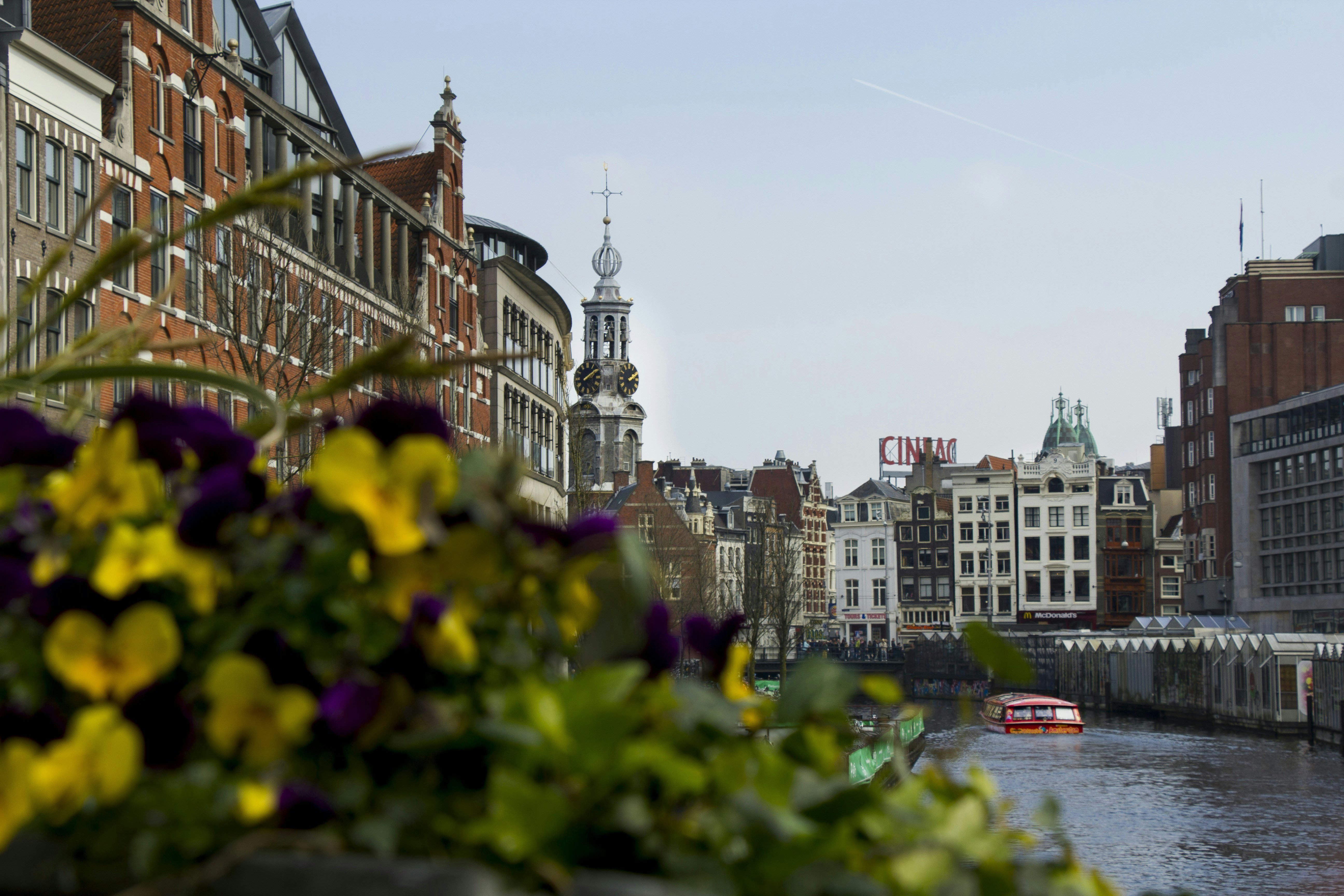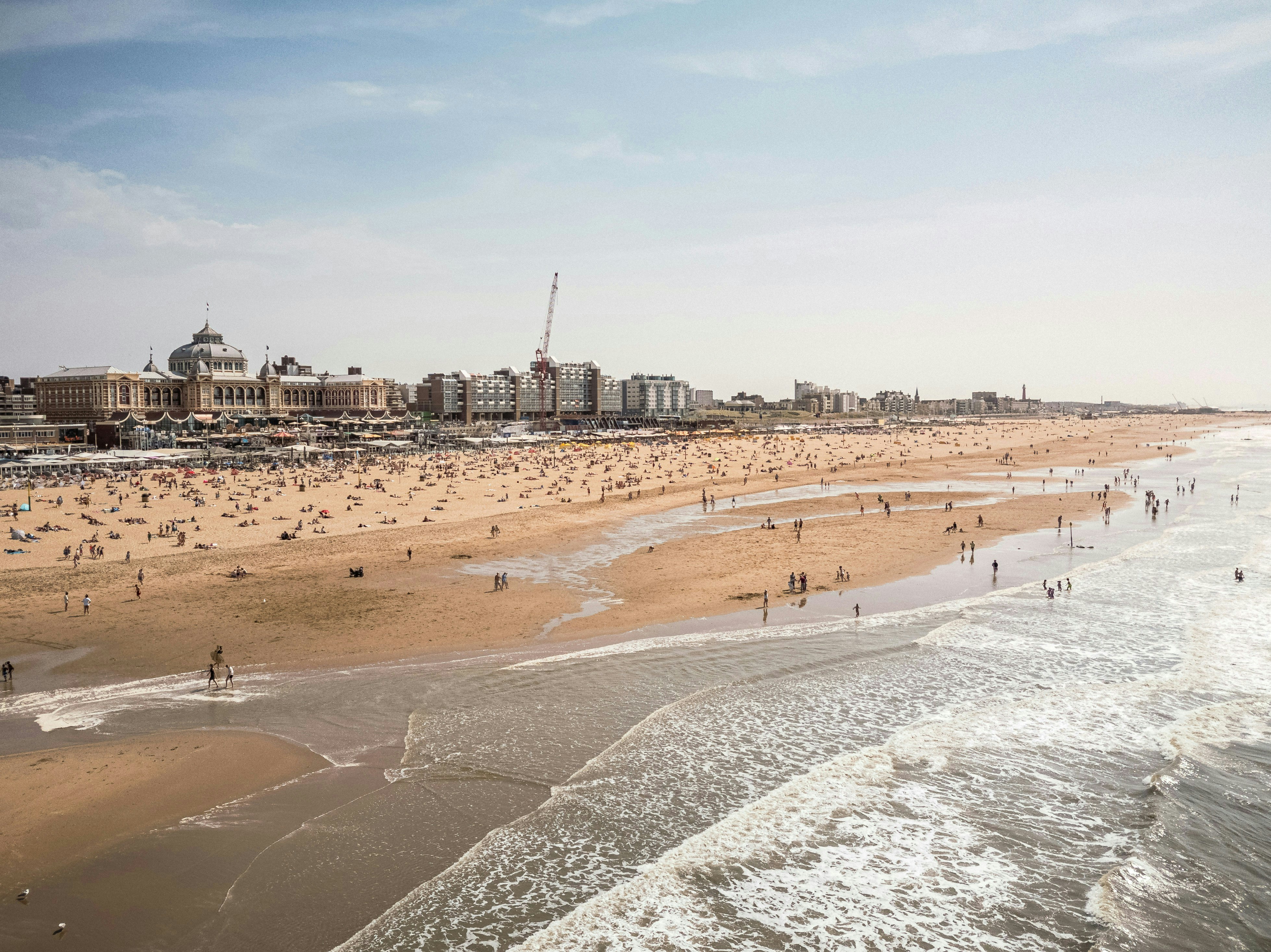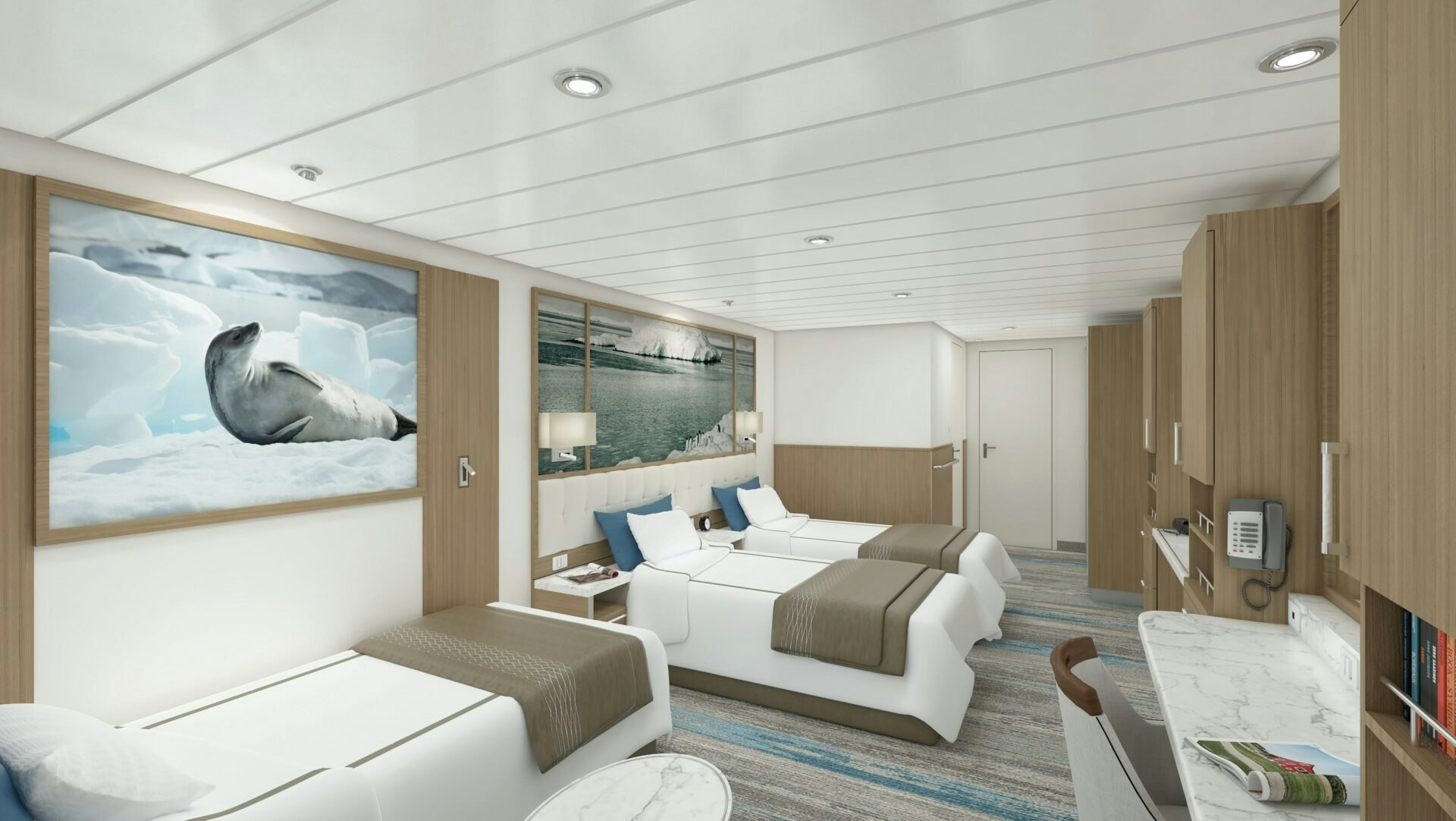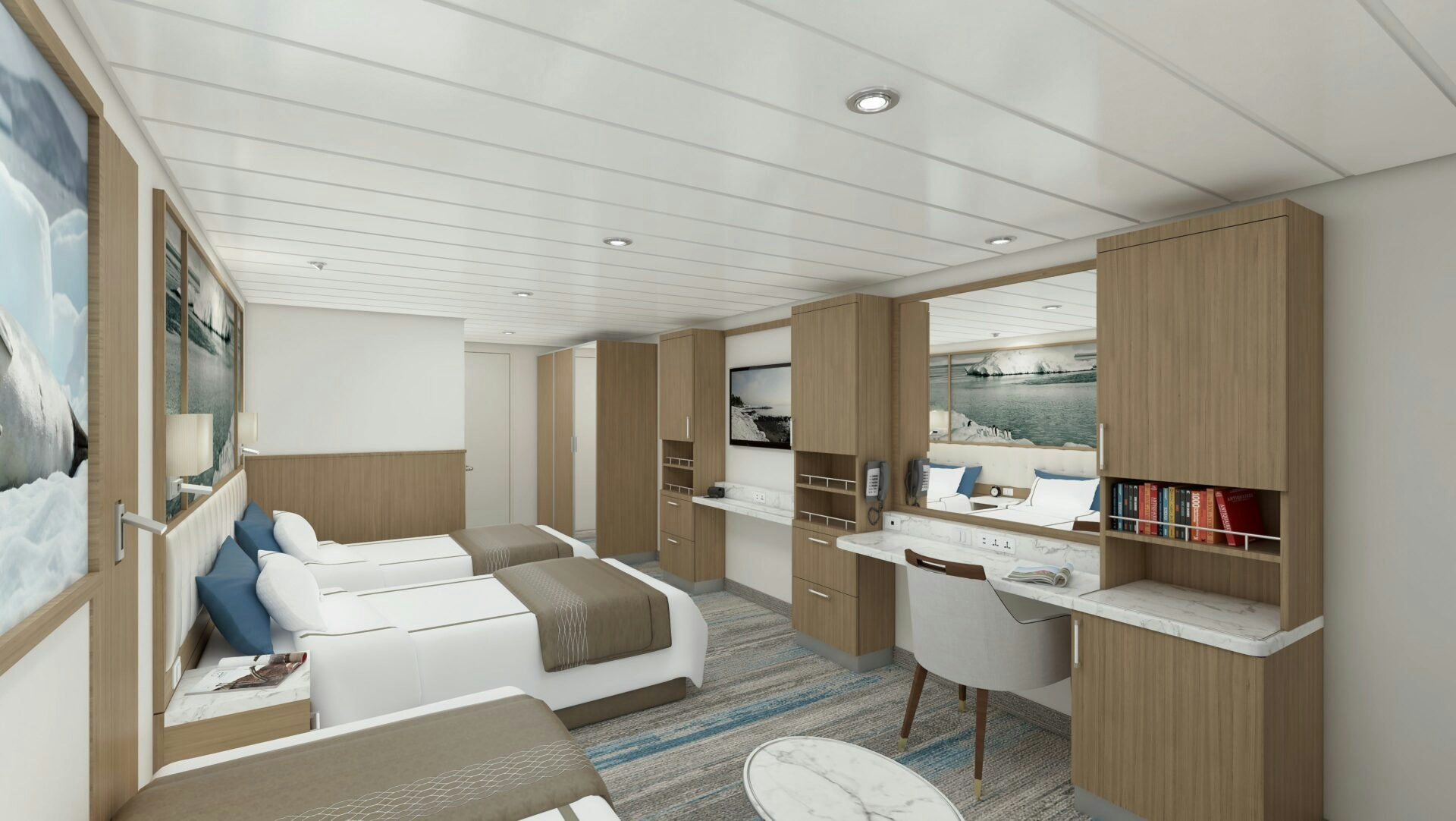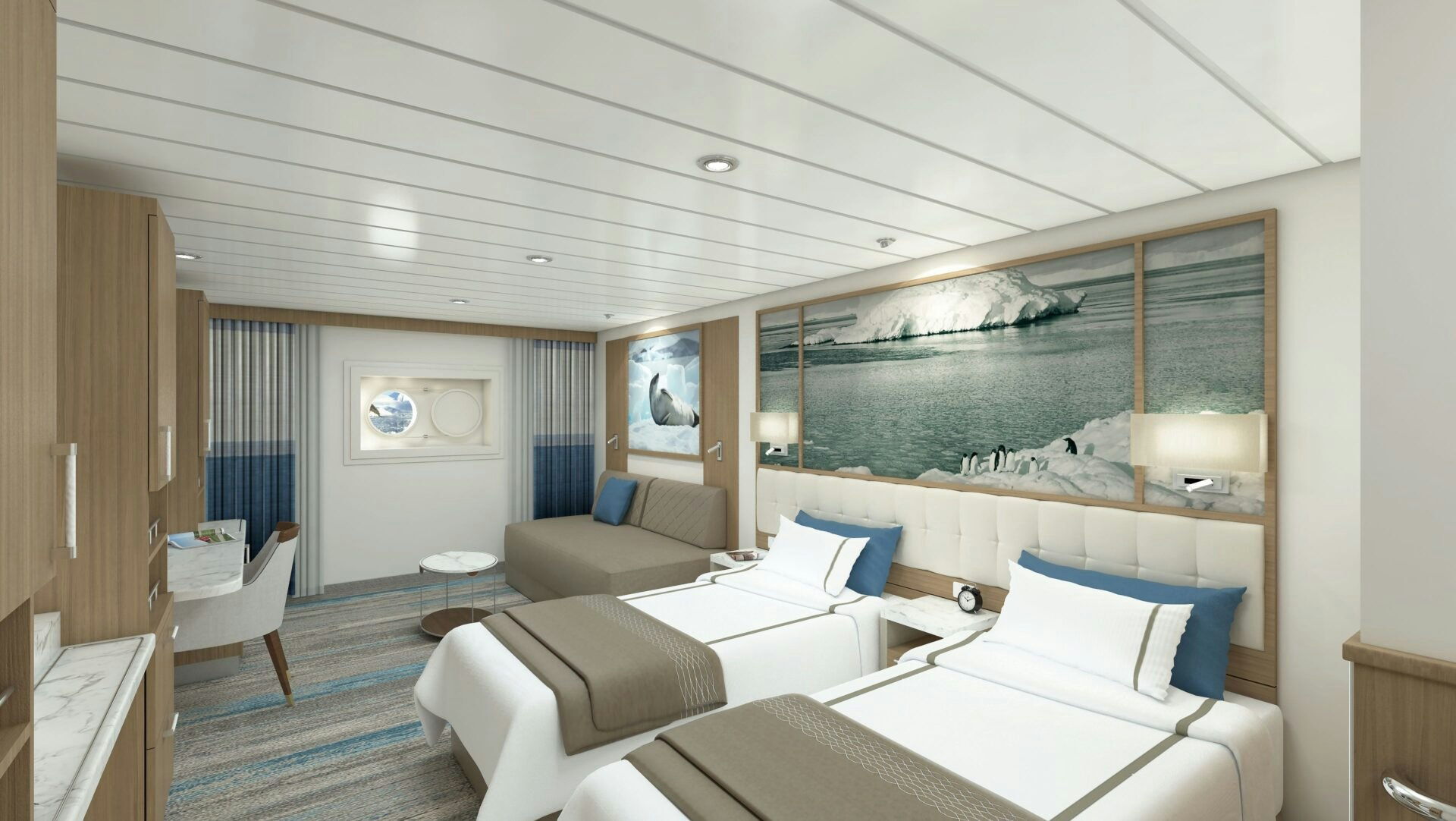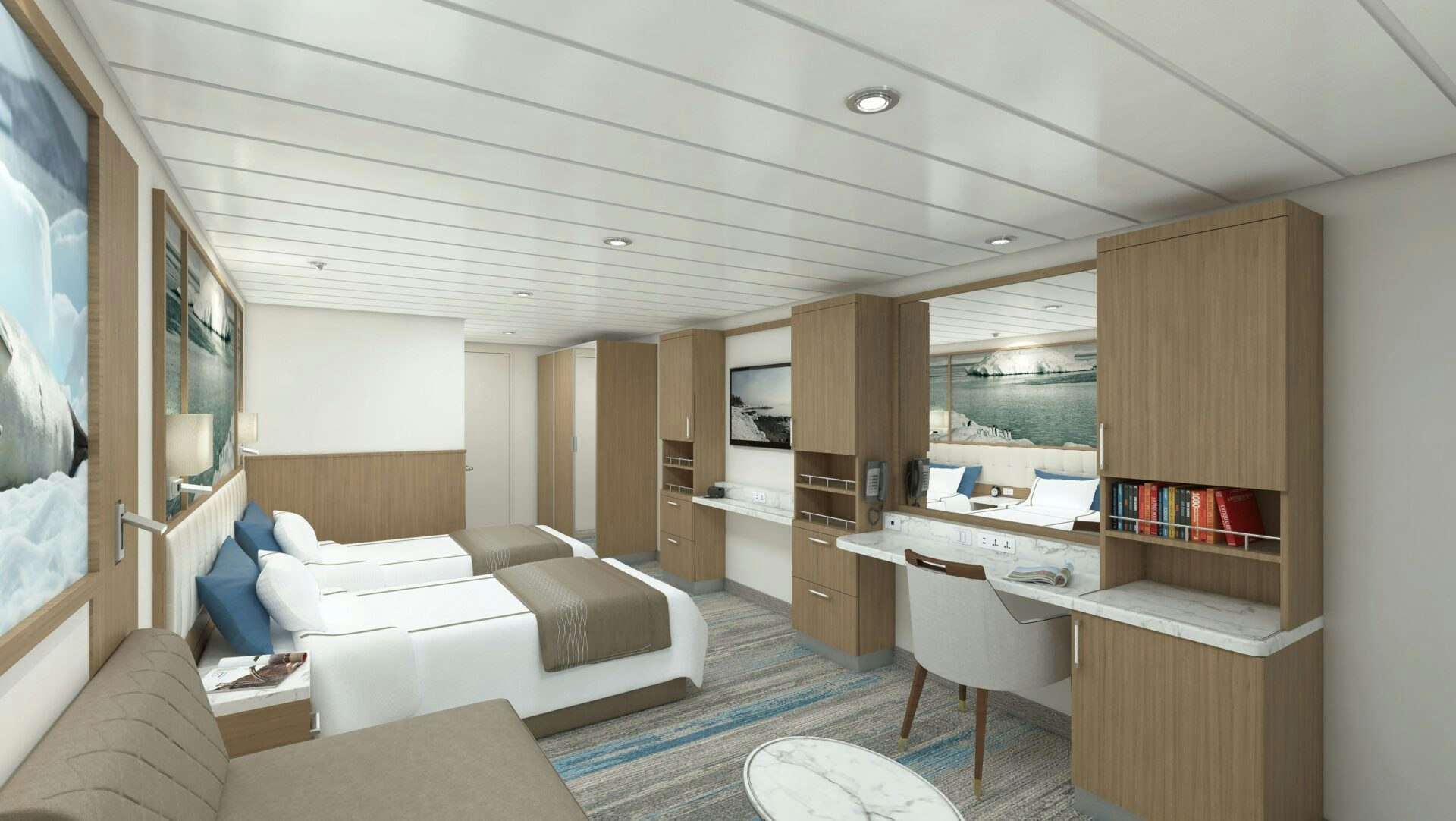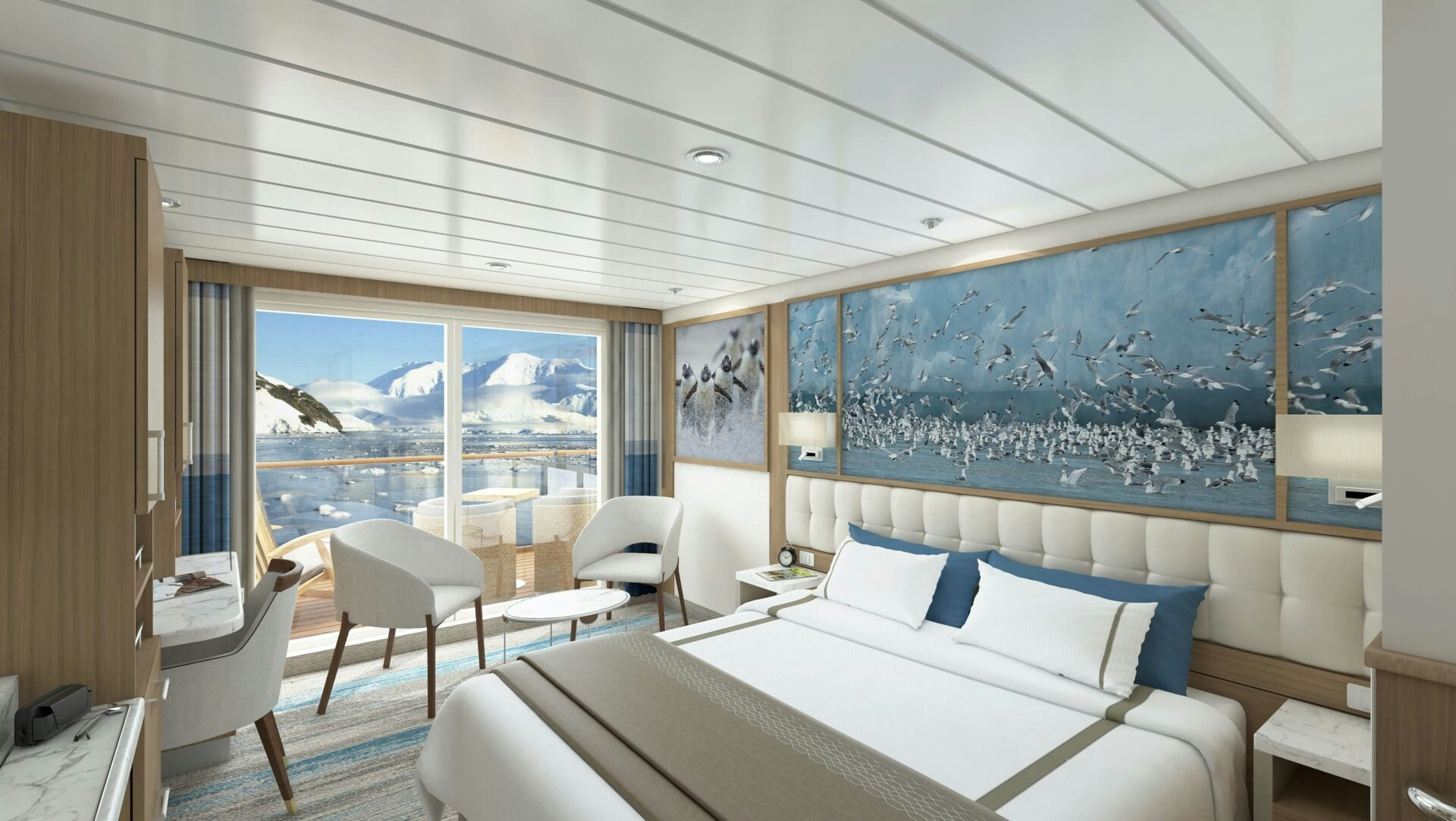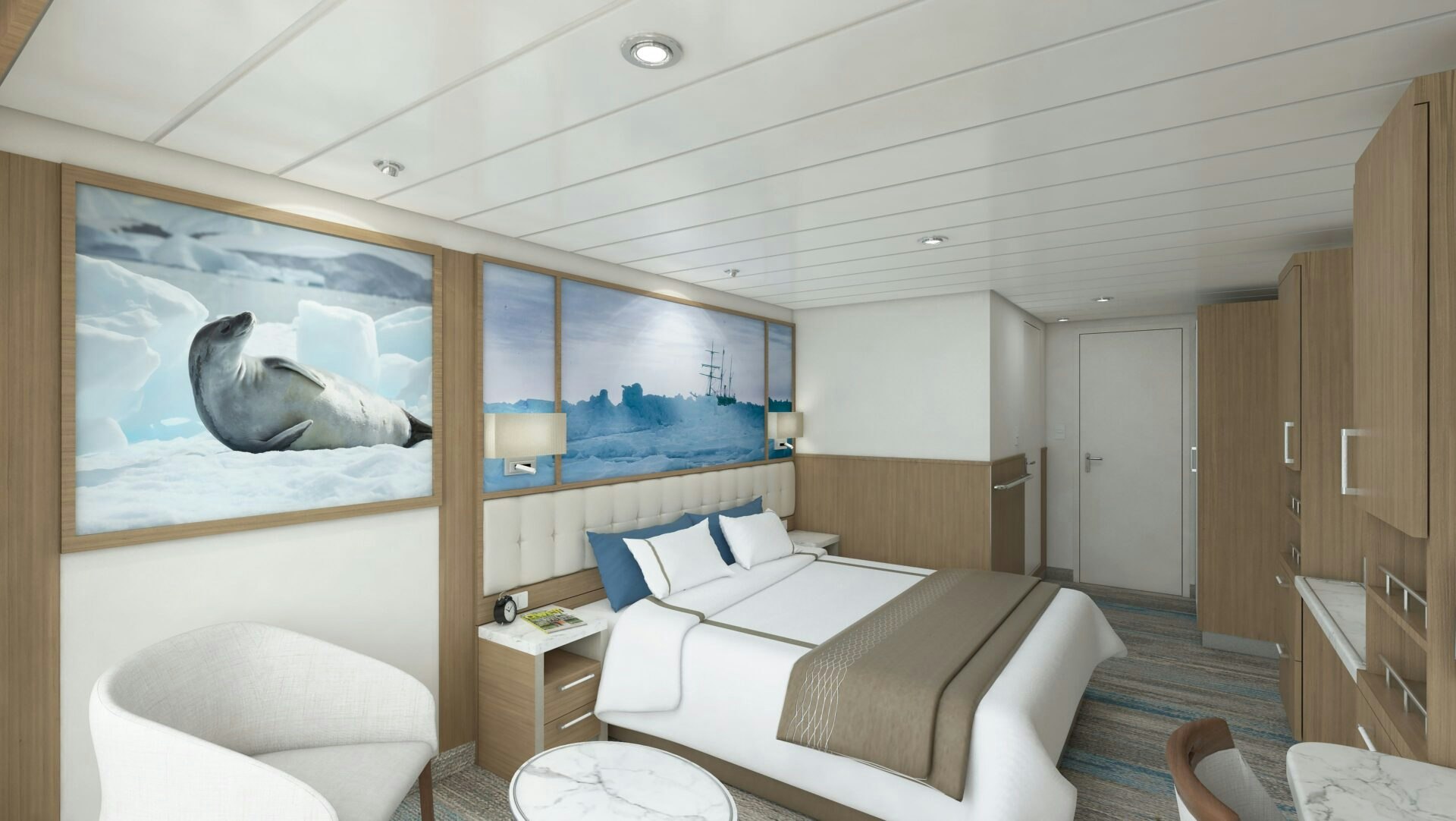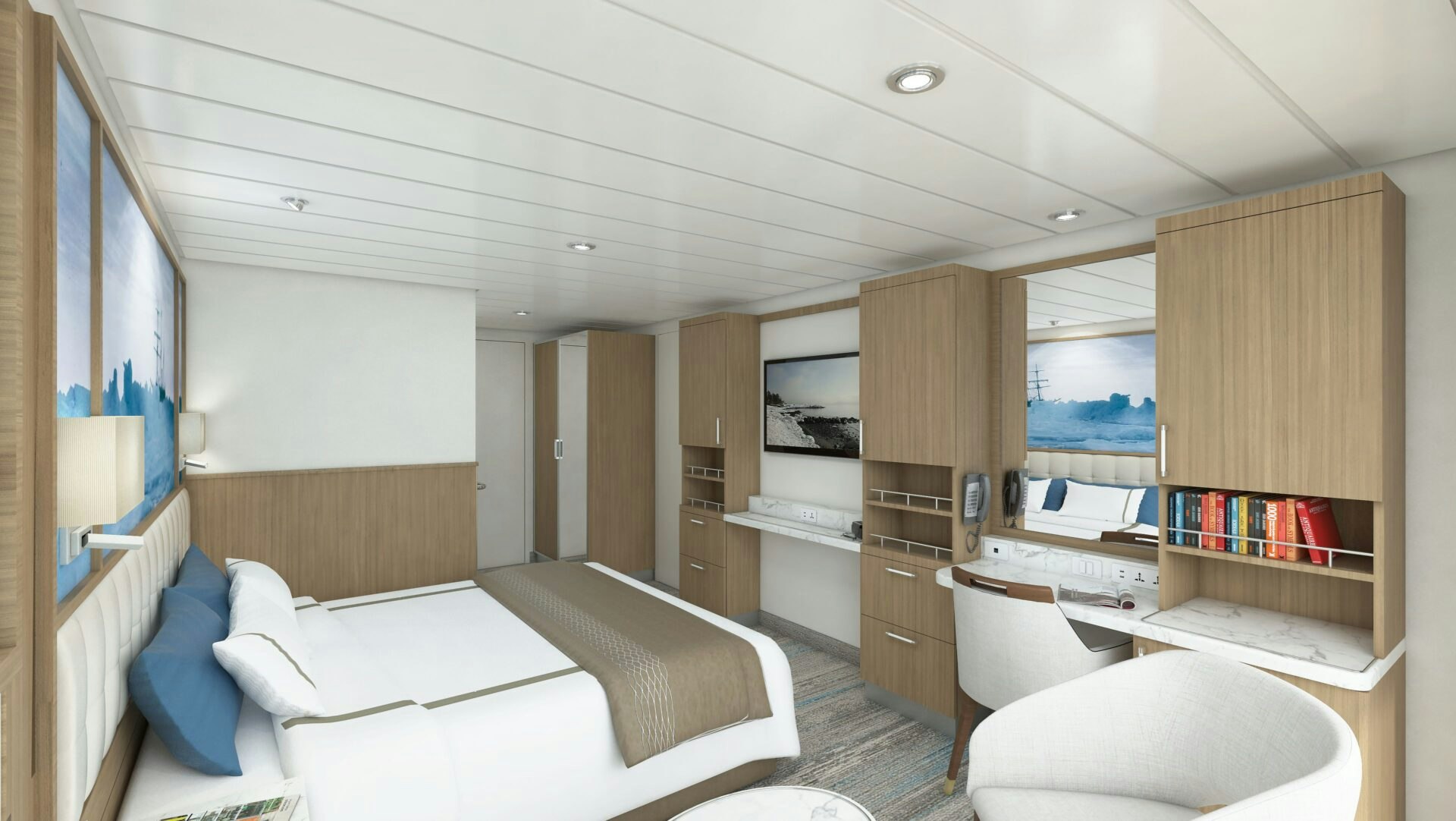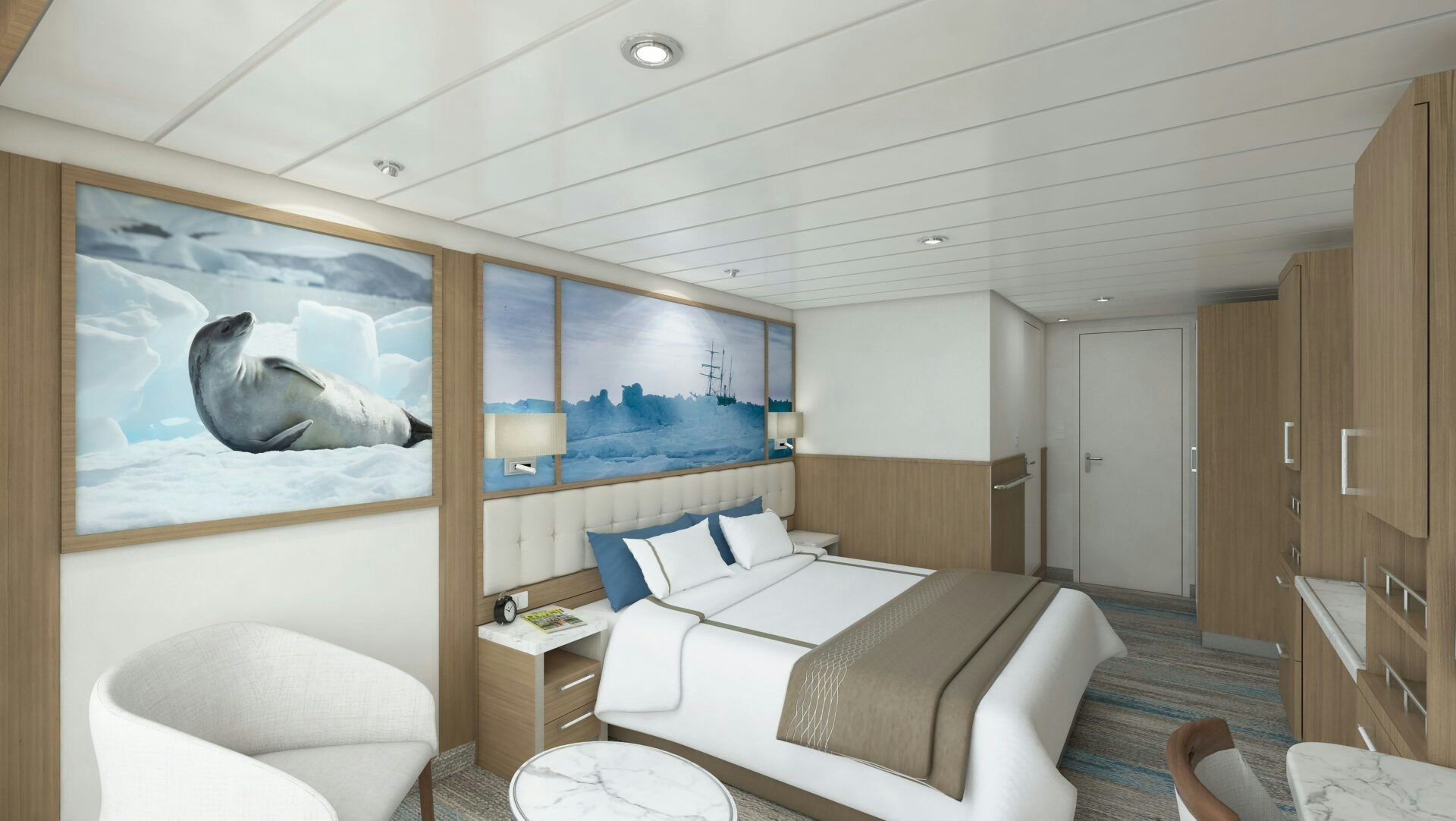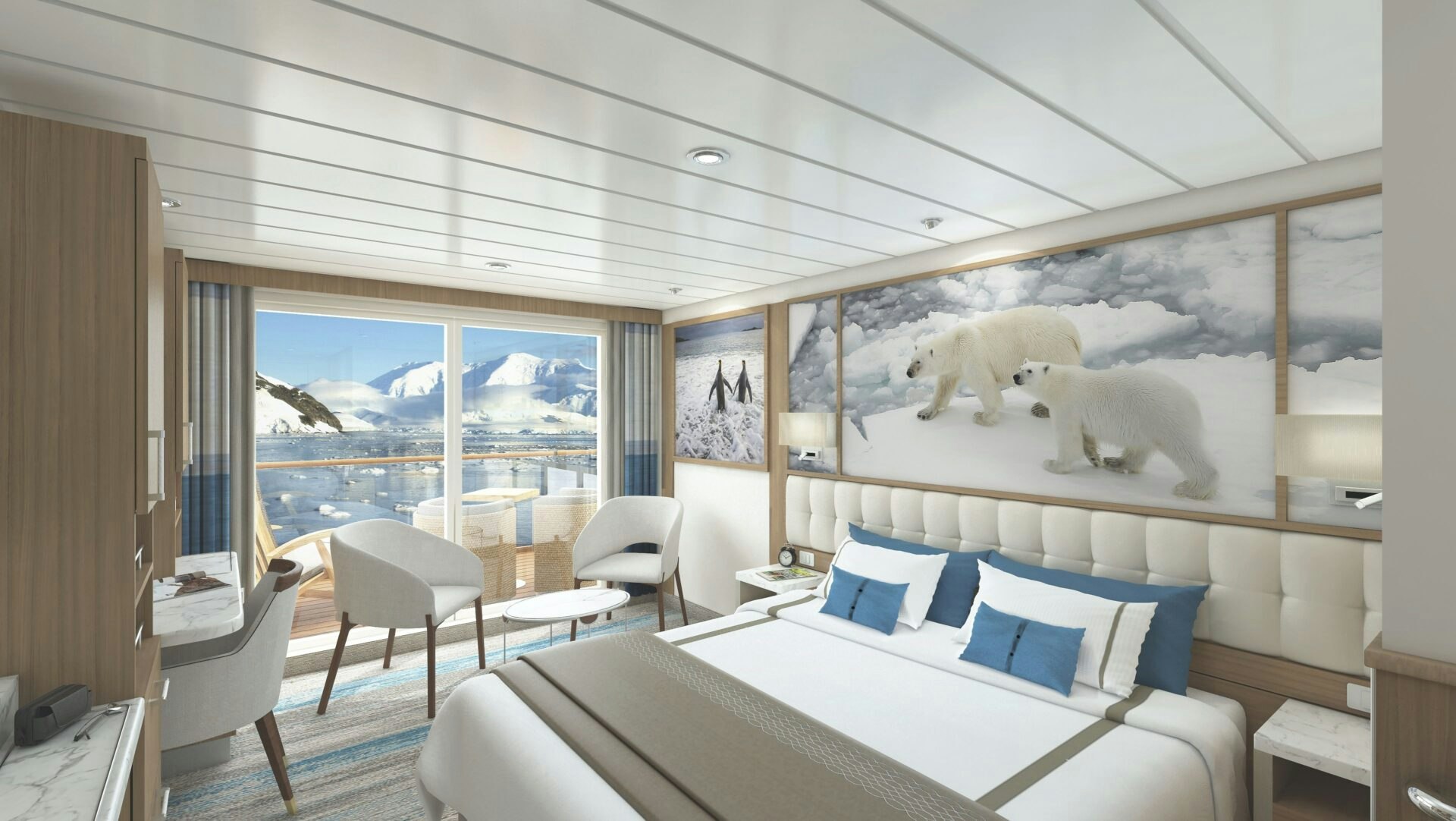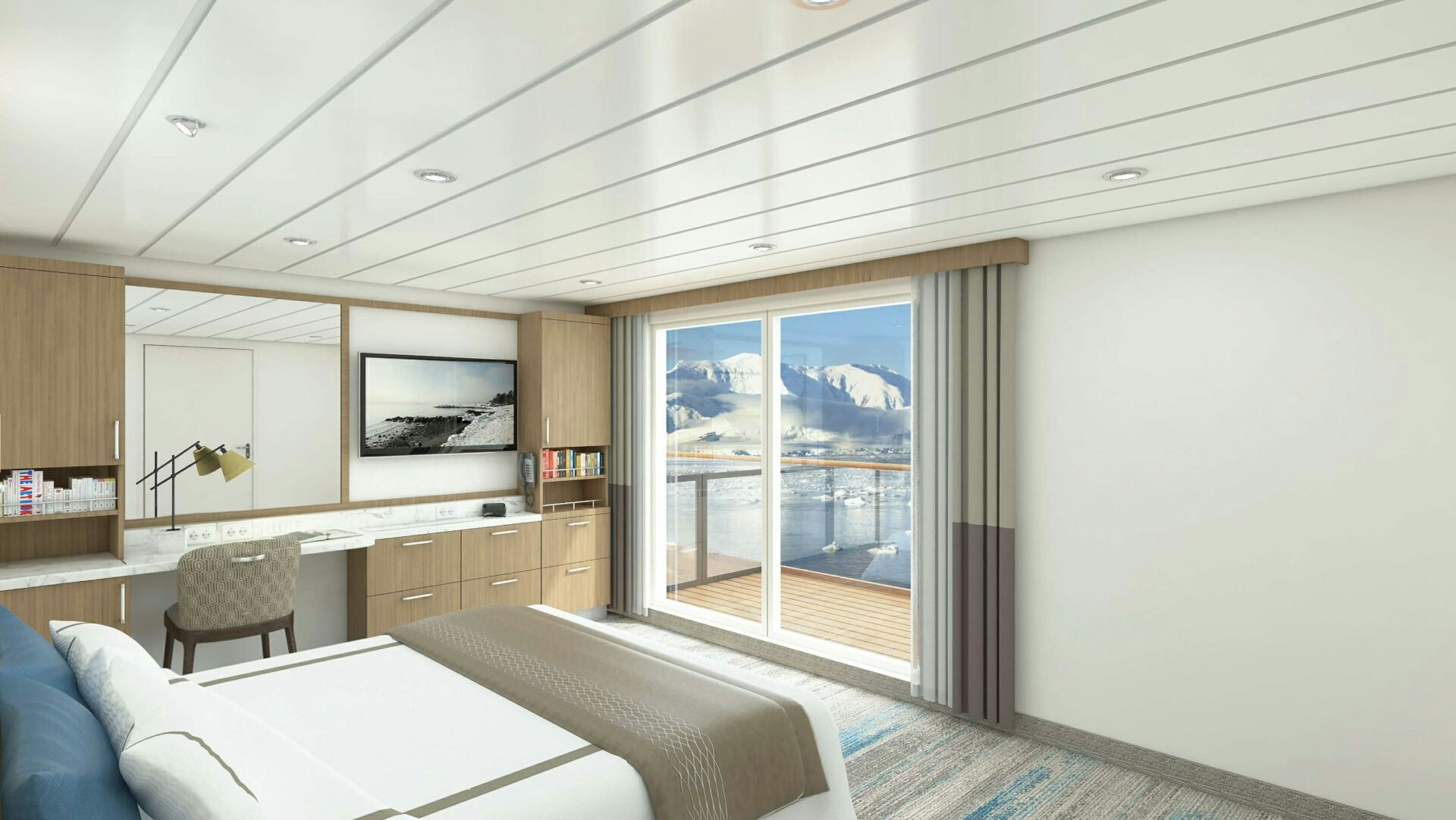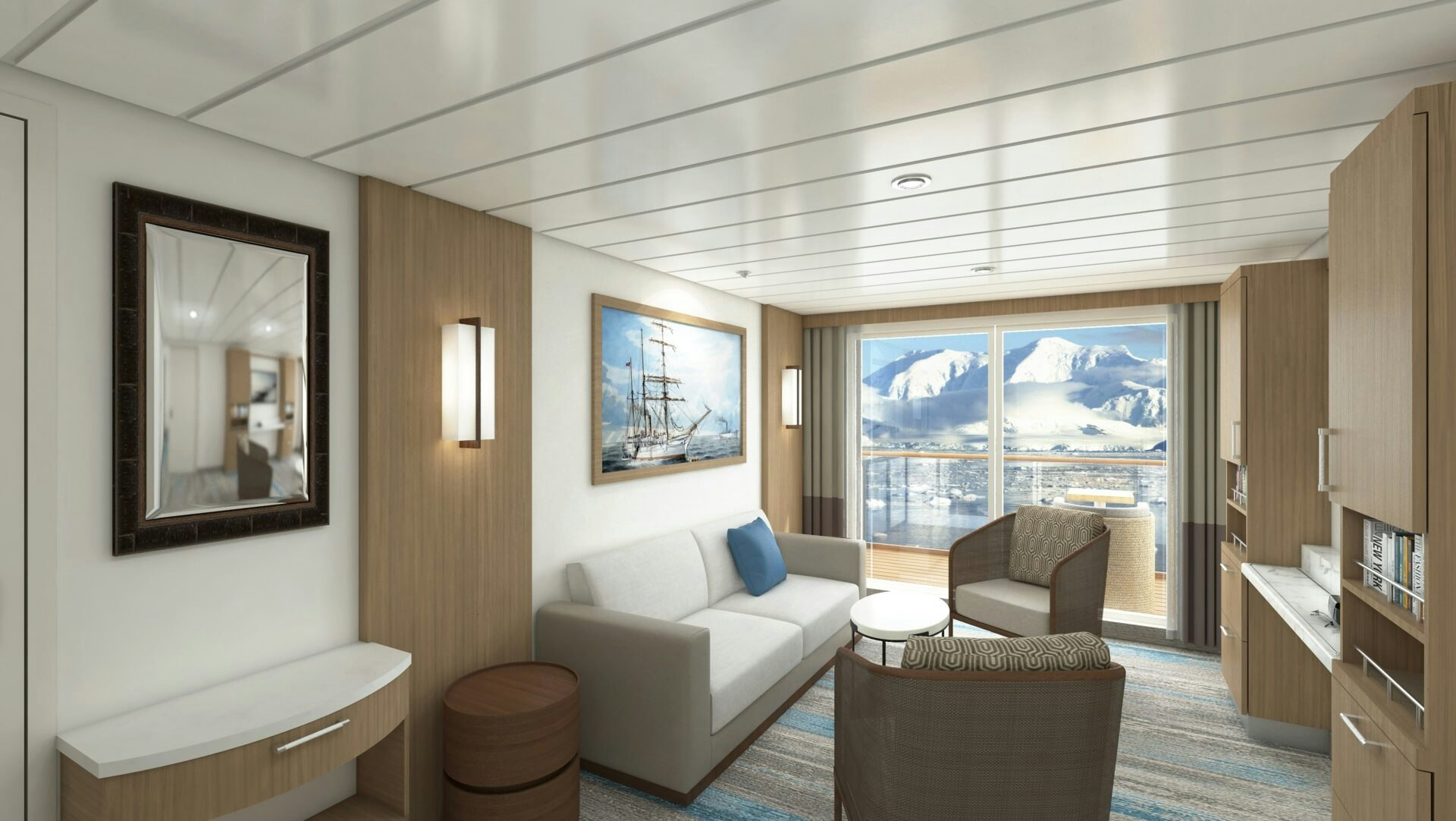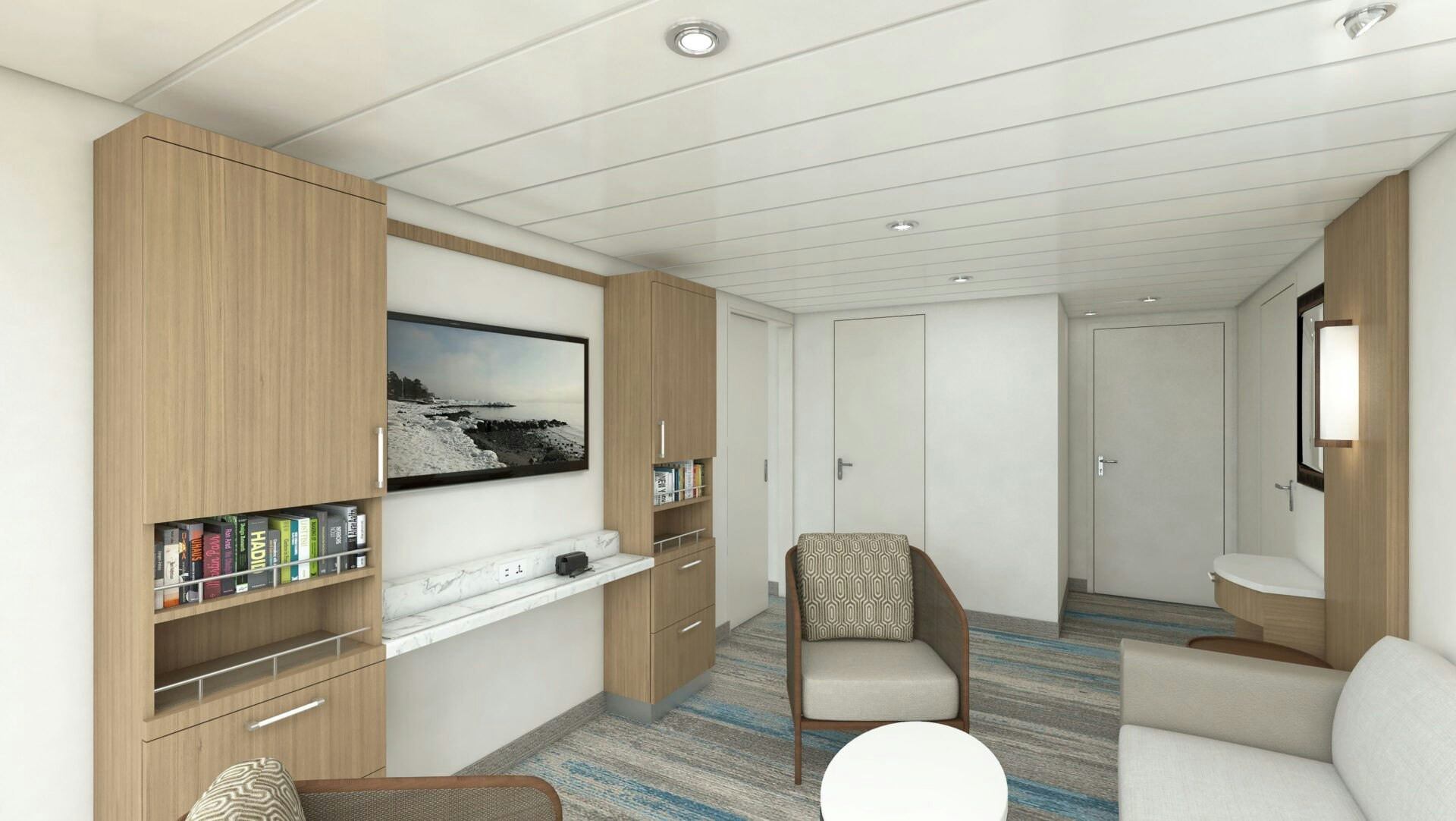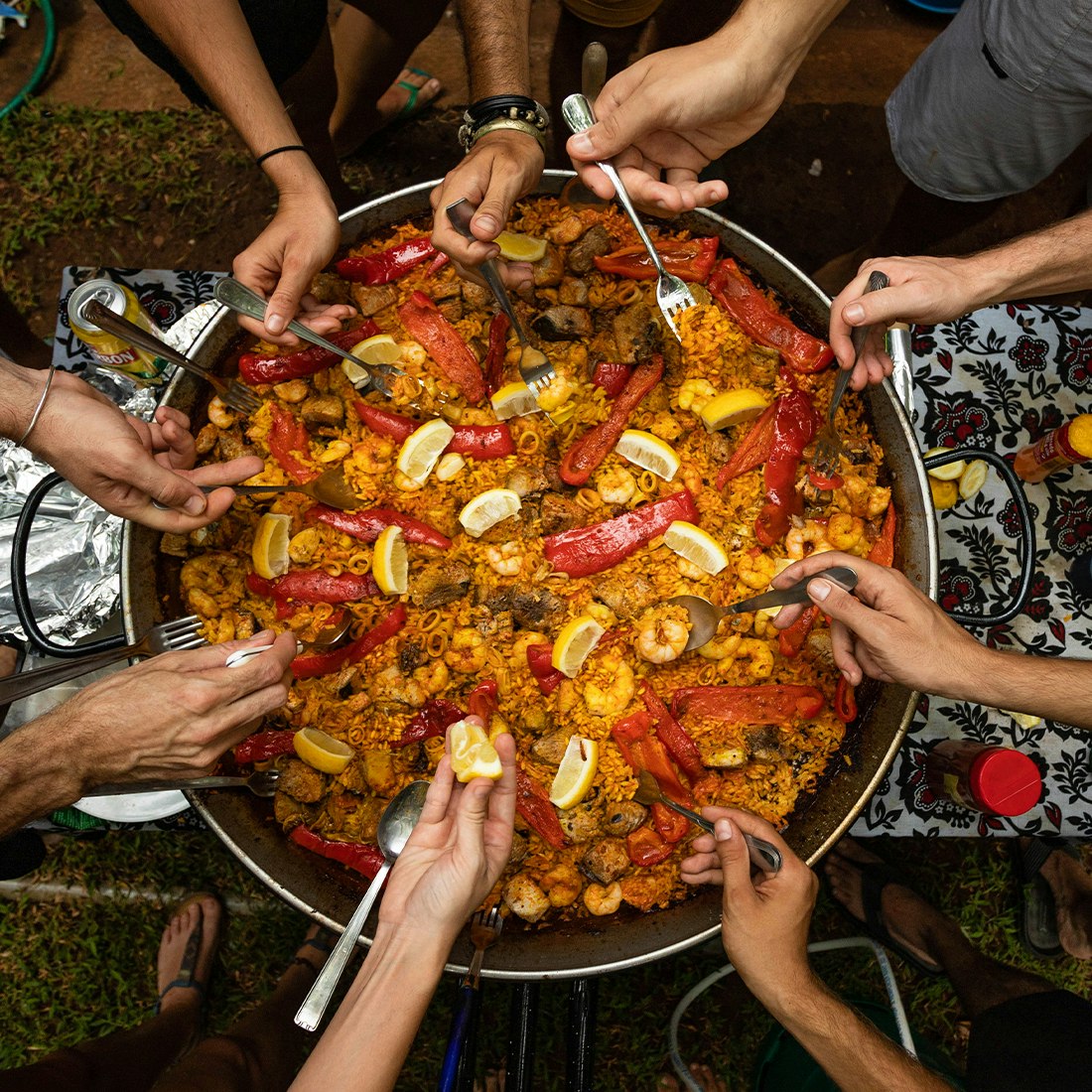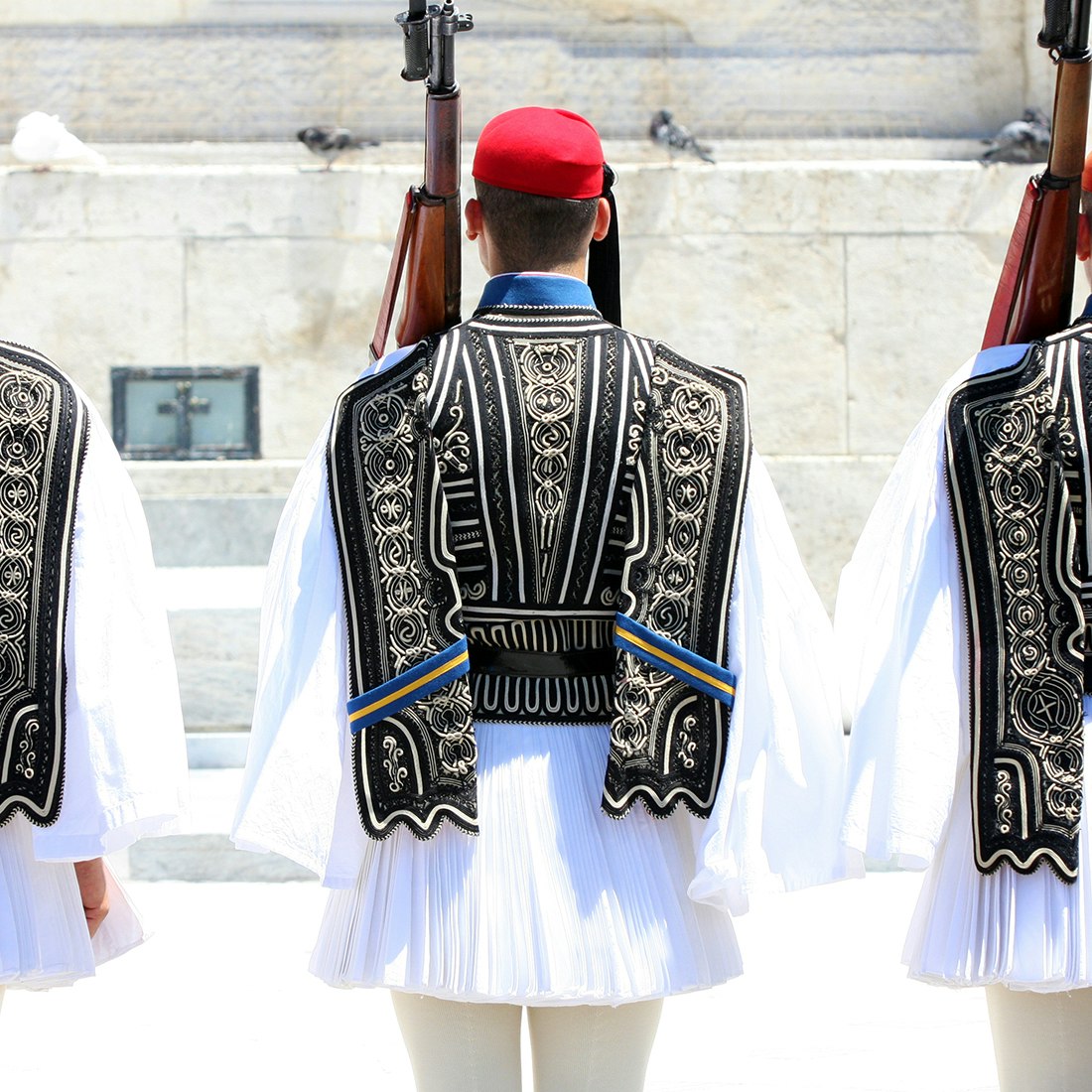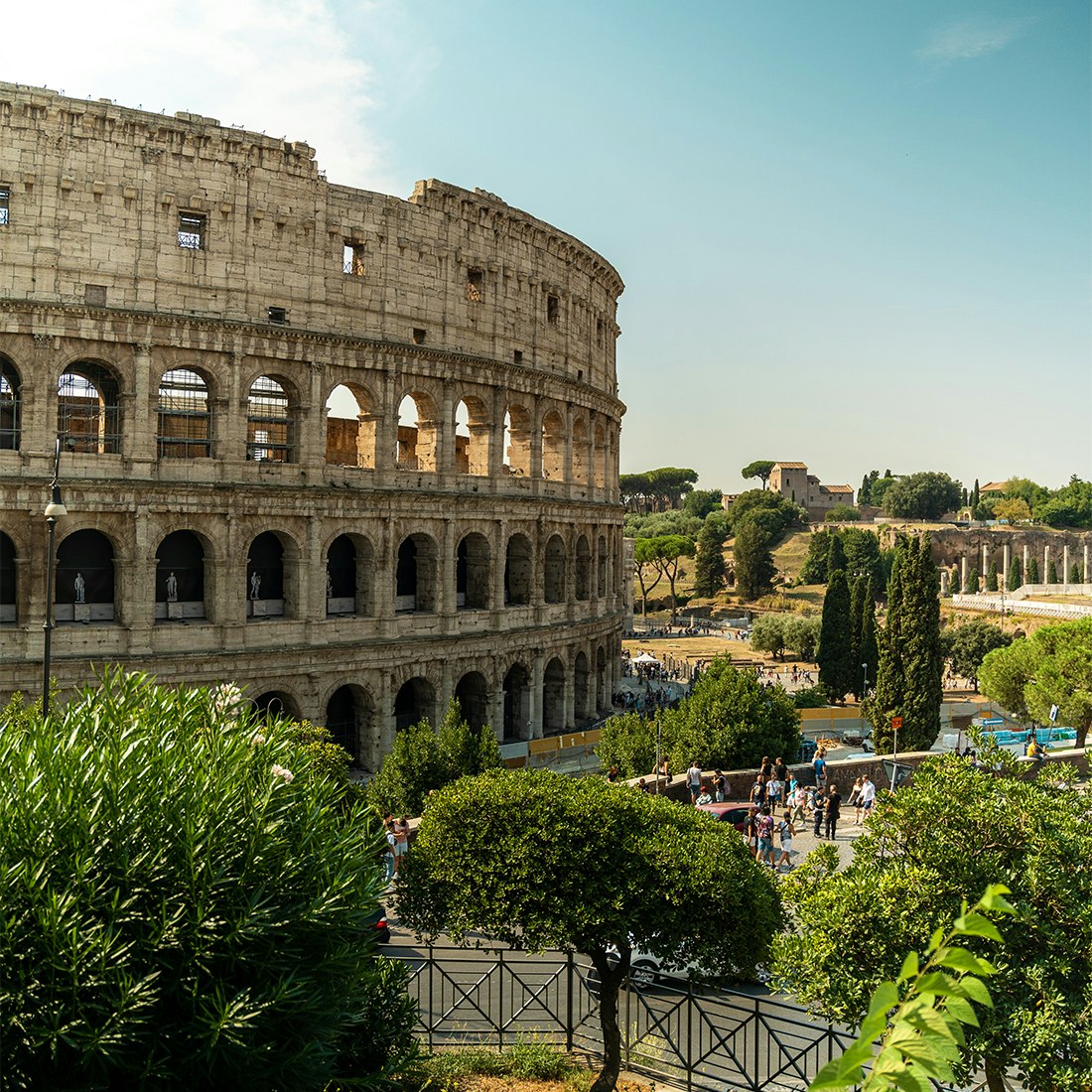Welcome to Portugal. On arrival at Lisbon airport make your way to the Arrivals Hall to meet our representative, followed by a transfer to our group hotel. At the hotel, visit our hospitality desk in the lobby to meet our team, who will provide you with useful information regarding pre-embarkation procedures and your time in Lisbon. You will also receive cabin tags for your luggage. Please clearly label the tags with your name and your cabin number on the ship.
This evening offers time to relax in preparation for our day exploring Lisbon tomorrow.
Accommodation: Atlis Grand Hotel Lisbon (or similiar)

Lisbon sits on the river Tagus, gifting it access to the coast that made Portugal one of world’s most successful trading nations. Explorers including Vasco da Gama, Magellan and Bartholomeu Dias sailed on behalf of their monarch, discovering new lands and establishing new trade routes. The city prospered, with much of the proceeds from their colonies spent on opulent architecture. On the morning of All Saints Day 1755, Lisbon’s faithful were huddled in church when a 7.7 magnitude earthquake struck, followed by a series of tsunamis that devastated the city. Candles lit for the religious ceremonies began a firestorm. By the end of the day, more than 75 per cent of the population had perished. Current day Lisbon reflects this tragedy, with few buildings pre-dating the 18th century, but money spent to rebuild the city was spent doggedly, creating a city of wide boulevards, sensible facades and parklands, all backed by opulent baroque interiors and paved by unique black and white-tiled pavements. With a relatively small population, Lisbon is an easy city to navigate. Its hillside suburbs are accessed by trams and funiculars while its waterfront remains a busy harbour, ready to continue the trading prowess that made the city famous.
Today's experiences are tailored for both garden enthusiasts and newcomers to Lisbon. Garden lovers can explore the vibrant, narrative gardens of Sintra or the elegant, formal gardens of the Palace of Queluz. Meanwhile, first-time visitors can discover the city’s top attractions. In the evening, we’ll gather for a Welcome Event to celebrate the beginning of our springtime journey.
Personalise your exploration with our included ‘Your Choice’ experiences.
Option 1 – Morning experience: Locally guided tour of Lisbon, with Mercado da Ribeira
Join our locally guided tour of Lisbon, with time to browse the spring produce at the city’s Mercado da Ribeira. The city’s story unfolds as we visit the suburb of Belém, with its Monastery of Jerónimos to hear more of Vasco de Gamas’ adventures; the waterfront memorial of Monumento das descobertas, honouring Prince Henri the Navigator and his fellow explorers; and the Torre de Belém – the 16th century fortification which acted as the gateway to Lisbon for all seafarers. This insightful tour tells tales of exploration, colonisation and devastation wrapped together by the history of a city whose influence has shaped much of our modern-day world.
Near the famed Cais do Sodre train station, the beautiful building of the Mercado da Ribeira sits topped with a Moorish-style dome. To end our tour, we visit this famous market and its popular ‘Time Out’ food complex. Lisbon’s populace has shopped for fresh fruit, vegetables, fish and meat here since 1882, with the market’s latest offerings including 30 ‘pop-ups’ offering petiscos (Portuguese tapas) and traditional products such as cheeses, cured hams, smoked sausages, fish conserves, wines and more. Our local guide introduces us to a variety of Portuguese specialties, such as Pastéis de Nata – the Portuguese custard tart that is a national specialty. Take time to explore and enjoy lunch (own expense), before transferring to our hotel. For those who prefer to explore the city further, there are plenty of transport options to explore the city further independently.
Option 2 – Morning experience: The Palace of Queluz and School of Equestrian
This morning, we experience Portuguese tradition at its finest with a visit to the Palace of Queluz and its exquisite formal gardens. The palace, a highlight on the "European Route of Historic Gardens," offers a glimpse into 18th-century royal life with its well-maintained lawns, elegant fountains, and vibrant flowerbeds, all meticulously designed by King Pedro III and Maria I.
We then travel from the palace to the Henrique Calado Riding Arena to witness the Portuguese School of Equestrian Art in action. This institution, a cornerstone of Portugal’s equestrian heritage, showcases the graceful "dance" of Pure-Blood Lusitano horses. At the arena, we'll see grooms attentively care for the horses and watch riders perform warm-up and ease exercises in period costume. This combination of historical grandeur and equestrian elegance promises a memorable immersion into Portuguese culture.
Option 3 – Full-day experience: Its Spring at Sintra
Sintra, located 32 kilometres northwest of Lisbon, has long served as the summer playground for the Portuguese elite. The rich and famous built romantic palaces and castles with spectacular gardens atop the hills of the Serra de Sintra, seeking to escape the heat. Although there are several palaces to explore, we will visit Quinta da Regaleira, to view its spring gardens.
Quinta da Regaleira feels as if it were designed by a child with a vivid imagination. Walking through its park is a delightful adventure, with secret paths leading to tiny staircases, a pond with stepping stones, and a network of mysterious caves and wells. Constructed between 1904 and 1910 during the twilight of the Portuguese monarchy, Quinta da Regaleira was originally owned by the Viscondessa da Regaleira. It was later expanded by the wealthy António Augusto Carvalho Monteiro, whose immense fortune earned him the nickname Monteiro dos Milhões, or ‘Moneybags Monteiro’. The gardens of Quinta da Regaleira are a masterpiece of romantic landscaping, filled with symbolic elements that hint at Monteiro’s possible connection to the Knights Templar. The estate is a maze of grottoes, towers and subterranean passages, each feature seemingly imbued with mysticism and hidden meanings. The gardens are best viewed in spring when the flowers are in bloom, adding vibrant colours and fragrances to the already magical atmosphere. Exploring the grounds, visitors are drawn into a world where every corner reveals a new secret, inviting them to uncover the layers of treats that make Quinta da Regaleira a legend.
Accommodation: Atlis Grand Hotel Lisbon (or similar)
Meals: Breakfast, Welcome Event with Canapés

This morning, we drive north to Portugal’s ‘second city’, arriving around midday. After an orientation tour, there is time to enjoy the Ribeira district on the Douro River, before we visit a traditional port cave.
Porto, Portugal’s second-largest city, entices visitors with its storied past, vibrant culture, and architectural splendour. It was in Porto that the Portuguese ‘Age of Discovery’ began when the indomitable Prince Henry the Navigator set sail to the western coast of Africa in the early 15th century. Porto has never looked back. The city lends its name to the fortified wine produced in nearby valleys, framing the Douro River with its picturesque streets, iconic iron bridges, and renowned wine cellars. In the UNESCO World Heritage ‘old town’ of Ribeira, a colourful blend of Romanesque, Gothic and baroque architecture adds to the lively atmosphere, while Porto’s historical Rabelo boats, once vital for transporting port wine barrels, grace the riverbanks. This blend of tradition and modernity makes Porto an unforgettable destination, captivating visitors with its timeless charm and dynamic spirit.
A visit to a port cellar is a quintessential experience in Porto. Here, the renowned port wine, crafted in the Douro Valley, is aged and stored in traditional ‘caves’. As you meander through the narrow streets, you’ll sense that you’re truly in the heart of port wine country. Our guide will introduce you to various types of port wine and offer tastings, allowing you to appreciate the distinct characteristics of each. The cool, dimly lit cellars create an atmospheric setting as you delve into the history and craftsmanship behind this iconic Portuguese wine.
Having sampled some of Portugal’s ‘favourite tipple’, we take a short drive to the port of Leixões, to board the Douglas Mawson. This evening, we enjoy a ‘Welcome aboard’ dinner, where we meet our Aurora Expeditons team and crew.

Entering Spain, our first port of call is Vigo. As one of its nation’s leading fishing ports, Vigo’s bustling harbour is a testament to centuries of seafaring tradition. The city’s history is also intertwined with the Camino de Santiago, with pilgrims traditionally arriving by sea before embarking on their journey to Santiago de Compostela. Visitors can enjoy the scenic waterfront, savouring fresh seafood at local restaurants, or explore the historical shipyards, which echo with tales of old. With its lively festivals, lengthy beaches and welcoming atmosphere, Vigo provides a glimpse into Galicia’s coastal heritage.
Personalise your exploration with our included ‘Your Choice’ experiences.
Option 1 – Morning experience: Santiago de Compostela
A scenic one-hour drive takes us to Santiago de Compostela, Europe’s most significant pilgrimage city. Once a major site during the Spanish Reconquista, Santiago was heavily damaged in the 10th century by Moorish invaders, igniting the passion of Christian Iberia and spurring a resurgence based on the city’s fervour for St James. Today, its Old Town, with its mix of Romanesque, Gothic, and baroque buildings, is renowned as the endpoint of the 790-kilometre Camino Francés pilgrimage route. The Camino de Santiago pilgrimage has been a spiritual journey for centuries, offering people a chance to seek personal transformation, fulfil a vow, or find a sense of purpose. Pilgrims walk the route for various reasons, including religious devotion, self-discovery or the pursuit of adventure.
Upon arrival, embark on a guided walking tour, passing notable landmarks like the town hall, the Pazo de Raxoi (the ‘Pazo’), and the Palace of Saint Jerome as you make your way to Praza do Obradoiro (Obradoiro Square). The highlight of your visit will be the Cathedral of Santiago de Compostela, dating back to 1122. Admire its stunning façade, showcasing a mix of architectural styles, and step through the Holy Door to delve into the fascinating history of St James and the city’s belief that his bones lie within its walls.
Option 2 – Morning experience: Soutomaior Castle and Winery Visit
Travelling inland, we arrive at Soutomaior, famed for its imposing fortress, extensively rebuilt in the 15th century by Pedro Madruga. Known for his brutal rule and involvement in local conflicts, Madruga’s renovations reflect his formidable and controversial legacy. Enter through the operational drawbridge and explore this meticulously preserved castle, surrounded by award-winning gardens and ancient chestnut trees. Our visit brings us to the gardens in spring, with their flowers both in bud and bloom. Following our castle visit, we head to a local winery, where we tour the vineyards and delve into traditional winemaking methods. Guided by the vintner, we enjoy a tasting of wine produced from the regional Albariño grapes, distinguished by its citrus, floral and almond notes, before returning to Vigo.
Option 3 – Morning experience: The Wines of the Rías Baixas
Visiting a winery in Rías Baixas offers a deep dive into Galicia’s rich winemaking tradition, where the Albariño grape takes center stage. This lush coastal region, often called "Green Spain," is renowned for producing some of the world’s finest white wines, thanks to its mineral-rich soils and cool Atlantic climate. The Albariño wines here are celebrated for their elegance, bright acidity, and vibrant flavours, perfectly complementing the region's seafood-rich cuisine. We tour the winery, where we learn about the unique role women vintners have played in shaping the region's wine culture. Historically, with men often away at sea, women took charge of the vineyards, a tradition that continues today. These women are at the forefront of cultivating new styles of Albariño and advancing winemaking techniques. Tasting the wines, we experience firsthand the bright, citrusy notes that define Albariño, making this visit to Rías Baixas an enriching morning excursion.

Spain’s ‘secret garden’ is the verdant region of Galicia. This less-visited section of the country is a true gem, beloved by Spanish travellers. Locals still speak Galician, and the blonde, blue-eyed inhabitants proudly hold on to their Celtic heritage. Bring your umbrella, as it may rain, but it’s well worth it. This region is a lush, green enclave amid Spain’s typical dry and arid landscape.
The coastal city of A Coruña is steeped in maritime heritage, celebrated through its iconic Tower of Hercules, the only working Roman lighthouse and a UNESCO World Heritage Site. As one of Spain’s major port cities, A Coruña has been a hub of maritime trade and exploration since ancient times, with various naval battles played out off its shores. Its strategic location on the Atlantic coast has made it a pivotal point for voyages across the seas, including journeys to the Americas during the Age of Exploration, when A Coruña served as a departure point for explorers such as Pedro Menéndez de Avilés, who founded St Augustine, thought to be the oldest continuously inhabited European-established settlement in the continental United States.
Today, A Coruña seamlessly blends its rich maritime heritage with its role as a dynamic modern city. The picturesque waterfront beckons both locals and visitors to stroll its streets, savour local wines at welcoming bars, indulge in fresh Atlantic seafood, and immerse themselves in the many cultural festivals on its annual calendar.
Our visit coincides with the start of the pilgrimage season, as many pilgrims prefer the cooler spring weather to the summer heat. This timing provides us with a deeper insight into this captivating tradition.
Personalise your exploration with our included ‘Your Choice’ experiences.
Option 1 – Morning experience: A tour of Coruña, with a Beer Chaser
Experience the vibrant flavours and heritage of A Coruña on this engaging morning excursion. Begin with a drive along Europe’s longest coastal promenade, soaking in the historical charm of the city, including the Castle of San Antón and the Tower of Hercules - an ancient UNESCO World Heritage Site that has served as a lighthouse and landmark at the entrance of La Coruña harbour since the late 1st century CE, when the Romans named it the Farum Brigantium.
After immersing ourselves in the city’s rich history, we shift focus to a local favourite: Estrella Galicia. For over a century, this iconic brew has been the beer of choice for Galicians. Our journey continues at the MEGA Museum and Estrella Galicia Beer Factory, a city landmark since 1906. Enjoy a guided tour of the brewery, where you’ll learn about the brewing process and delve into the brewery’s storied past. Then, indulge in a tasting session where you can sample a variety of Estrella Galicia beers, roll your own brew, and savour a selection of five different brews.
Option 2 – Morning experience: Ferrol – A Maritime Champion
Across the bay from A Coruña, we visit Ferrol, a town steeped in maritime history. A city hardened by a thousand battles, Ferrol is a wise mixture of culture, urban elegance, and military power, seeking a resurgence in popularity as the starting point of the ‘English Way’ portion of the pilgrimage to Santiago de Compostela. Stroll through the neighbourhood of Barrio da Magdalena, declared a Historic-Artistic Site, known for its rationalist layout from the Enlightenment era and the origins of the typical Galician houses with galleries. Visit the Mirador de los Jardines de Herrera to admire the Church of San Francisco, the Palace of the Navy Captaincy, and the Military Arsenal.
Our morning includes a visit to the shipbuilding museum in Ferrol, offering a deep dive into the town’s rich naval heritage. Housed in a historic building, you’ll learn about the shipyards that have been central to Ferrol’s economy and defence. Interactive displays and multimedia presentations bring to life the stories of the ships built in Ferrol and the people who constructed them. This naval town offers us a chance to embrace its maritime past, which is such an integral part of the communities in this region.
Option 3 – Morning experience: The Roman Enclave of Lugo
The unique city of Lugo offers a captivating glimpse into the past, with its perfectly intact UNESCO-listed Roman walls, heralded as the most complete and best-preserved example of Roman military architecture in the Western Roman Empire. Constructed in the late 3rd century to defend the Roman town of Lucus, these fortifications stretch over a kilometre and rise more than 7 metres high. With 71 of the original 85 towers and 10 entrance gates still standing, Lugo’s walls are a testament to the city’s historical importance during the Roman Empire, when it was a key hub in the province of Gallaecia, known for its strategic and economic significance.
As you step inside these ancient walls, you will discover St Mary’s Cathedral, with its chapel dedicated to San Froilán, Lugo’s patron saint. But Lugo is not just an old city; it also boasts impressive graffiti, murals and modern artworks. A must-see is the image of Julius Caesar by graffiti artist Diego As. This piece, a nod to the city’s Roman history, is especially impressive when viewed from the city wall and even won an award for best mural in the world in 2022. Declared the oldest city in Galicia, Lugo offers travellers a city with a medieval heart, with a modern-day twist, making it an intriguing place to visit.
Option 4 – Full-day experience: Santiago de Compostela – Walk a Section of the Pilgrimage Trail
Today we join the trail to Santiago de Compostela, Europe’s most significant pilgrimage city. Once a major site during the Spanish Reconquista, Santiago was heavily damaged in the 10th century by Moorish invaders, igniting Christian Iberia’s passion and spurring a resurgence centred on the city’s fervour for St James. Today, its Old Town, with its blend of Romanesque, Gothic and baroque architecture, is renowned as the endpoint of the 790-kilometre Camino Francés pilgrimage route. The Camino de Santiago has long been a spiritual journey, offering pilgrims a chance to seek personal transformation, fulfil vows, or find purpose through devotion, self-discovery or adventure.
Our scenic drive takes us to Calzada, where we become pilgrims ourselves for an hour, walking a few kilometres along the historic trail. Having stretched our legs and contemplated our path, we continue to Santiago de Compostela where we embark on a guided walking tour, passing landmarks like the town hall, the Pazo de Raxoi (the ‘Pazo’), and the Palace of Saint Jerome as you make your way to Praza do Obradoiro (Obradoiro Square). The highlight of your visit will be the Cathedral of Santiago de Compostela, dating back to 1122. Admire its stunning façade, showcasing a mix of architectural styles, and step through the Holy Door to explore the captivating history of St James and the city’s belief that his bones lie within its walls. (Note this tour involves walking on uneven surfaces and through forested areas, requiring a good level of fitness and balance.)

Once a Roman port known as Gigia, Gijón’s maritime legacy dates back centuries, with remnants of ancient docks and Roman baths still visible today. Its strategic coastal location has shaped its identity as a bustling port city, a heritage celebrated through its maritime museum, which houses artefacts and exhibits detailing the city’s seafaring past. Gijón also served as a crucial point of departure for pilgrims on the Camino de Santiago, a medieval pilgrimage route to Santiago de Compostela in northwestern Spain, drawing travellers from across Europe. Local explorers and adventurers, inspired by Gijón’s seafaring traditions, have embarked on voyages that shaped global exploration. Notably, the city was a significant hub for Asturian emigrants who left for the Americas in the 19th and early 20th centuries, contributing to its international ties.
Gijón’s waterfront promenades, bustling marina, and vibrant cider houses come alive in the spring, offering a true taste of local life. It’s ‘Apple Bloom’ season in the Asturias, when towns and villages celebrate the apple farms that are scattered throughout the region. Spend your day soaking in the seaside atmosphere of Gijón, or opt for one of our ‘Your Choice’ experiences, each designed to add a spring to your step.
Personalise your exploration with our included ‘Your Choice’ experiences.
Option 1 – Morning experience: Asturias’ Capital – Oviedo
A half-hour drive south of Gijón brings us to Oviedo, the current capital of the Asturias region. This historic city has been crucial in preserving Christianity in the Iberian Peninsula since the 9th century. During this time, Oviedo became a hub of pre-Romanesque architecture, showcasing a distinctive style that influenced religious buildings throughout Spain. But Oviedo’s significance goes beyond its architecture; it was also the seat of the early Asturian Kingdom, and remained an important religious and cultural centre throughout the Middle Ages.
Our local guide will lead a walking tour of Oviedo’s downtown core, highlighting the stunning San Salvador Gothic Cathedral and the restored Old Town. After the tour, you will have time to explore this picturesque city on your own. With its rich historical heritage and modern charm, Oviedo is a favourite destination for visitors to the Asturian coast.
Option 2 – Morning experience: Apple Blossom Cider Farms
The coastal towns of Asturias’ ‘cider region’ are brimming with cider houses, beloved by locals and visitors alike. Gijón’s cider houses, called sidrerías, are found all over the city, but the best ones are on the edge of Cimadevilla (the old town), where you can enjoy the show of the waiter pouring your drink while listening to the rumbling of the Atlantic Ocean crashing below. Naturally, a visit to a cider farm is a must. Just half an hour from Gijón, this experience is a true springtime delight. The orchards burst into a sea of white apple blossoms, creating a picturesque setting for a leisurely stroll. Here, cider is more than just a drink; it’s a central part of the local culture. Festivals celebrate its significance, and there’s a strong emphasis on sustainability in brewing practices. During your visit, you will sample a variety of traditionally crafted ciders and learn the unique pouring technique that enhances its flavour. The farms traditional craftsmanship, combined with the deep-rooted cider culture and commitment to sustainability, ensures a fun and immersive experience.
Option 3 – Morning experience: Gijón’s Coastal Cousins
Perched on Spain’s northern coast in Asturias, the villages of Cudillero and Luarca offer a delightful glimpse into the region’s maritime heritage. Cudillero, with its resemblance to a quaint Cornish fishing village, features narrow streets spiralling down towards the harbour, flanked by colourful houses and mossy paths. Steeped in Viking legend and maritime history, this village enchants visitors with its winding alleyways and blooming hydrangeas.
A few steps away, Luarca presents a contrasting yet equally captivating landscape where the sea meets the mountains. Luarca boasts the often-photographed Ermita de La Regalina. This historic chapel, perched on a hilltop, overlooks the rugged coastline and is dedicated to the Virgin of La Regalina, a revered local patron saint. Together, Cudillero and Luarca provide an enchanting exploration of Asturias’ coast, making them ideal destinations to experience the authentic charm of coastal Spain.

Our time in port today is limited to a lunch stop, but what a special lunch it is. Welcome to the vibrant city of San Sebastián renowned for its delectable treats. That’s right – it’s tapas time! Tapas, or pintxos as they are known in San Sebastián, offer more than just a meal; they provide a culinary journey that captures the essence of Basque culture. The secret to eating pintxos like a local is to master the txikiteo, a Basque-style food crawl. We split into groups and join a local guide to embark on a txikiteo adventure through the city’s colonnaded plaza and streets, where each bar offers its own specialties. Savour the rich flavous of jamón ibérico, the creamy delight of croquetas, and the tangy bite of boquerones. Pair these with a glass of local txakoli wine or a refreshing cider to enhance the experience. Enjoy every bite and make the most of this delightful lunch stop in one of Spain’s most gastronomically celebrated cities.
Although eating txikiteo style is a Basque tradition, we understand it may not be for everyone. Please feel free to stay on board for lunch or explore San Sebastián independently. (Note: The port of Pasajes is approximately 15 minutes’ drive from San Sebastián.)

Today, we dock at the port of Le Verdon, the northern gateway to the Médoc region. Due to tidal restrictions on the Gironde estuary, we moor near its mouth, ensuring dependable access for Bordeaux and the renowned vineyards of Le Médoc. For those joining our morning or half-day ‘Your Choice’ experiences, a shuttle service to the nearby seaside town of Le Verdon-sur-Mer will be provided, allowing you to enjoy some time along this picturesque coast.
Located between the Atlantic Ocean and the Gironde estuary, Le Médoc is home to some of the most famous wine estates in the world, including Château Lafite Rothschild, Château Margaux, and Château Latour. The châteaux in Médoc have been producing wines of exceptional quality for centuries, significantly contributing to Bordeaux’s wealth and reputation. Médoc’s unique terroir, with its gravelly soil and ideal climate, allows for the cultivation of grapes that produce wines known for their elegance, complexity, and ageing potential. While some wineries require visitors to be licensed wine merchants, many warmly open their cellar doors for tastings to wine enthusiasts from around the world.
Our ‘Your Choice’ experiences offer you the opportunity to explore Bordeaux, or immerse yourself in Médoc’s winemaking tradition, promising an unforgettable visit to this esteemed wine country.
Personalise your exploration with our included ‘Your Choice’ experiences.
Option 1 – Morning experience: The Wines of Médoc – A Winery Tour and Tasting
Visiting Château Maucaillou in the Médoc region, an hour from Le Verdon, offers a deep dive into winemaking excellence. Established in 1875 by J. Petit-Laroche, the vineyard now spans 90 hectares of Garonne gravel layer. These gravelly soils are crucial for producing exceptional wines, as they reflect sunlight onto the grapes, promoting full ripeness. Château Maucaillou’s Moulis vineyard is the oldest in Médoc, planted with 52 per cent cabernet sauvignon, 41 per cent merlot, and 7 per cent petit verdot. At the tasting, Château Maucaillou wines reveal a subtle and fruity aromatic power, with ripe and concentrated flavours. Expect a full-bodied, generous wine with finesse, elegance, impressive length and excellent ageing potential. Accompanied by winery guides, explore the harvest room, vat room and barrel cellar. Enjoy a hosted tasting at this historic and picturesque winery in the heart of Médoc.
Option 2 – Half-day experience: Wine Tasting and Picnic Lunch at Château Loudenne
Known locally as ‘Le Château Rose’ due to its pink walls, Château Loudenne boasts a rich history spanning 350 years. This prestigious past owes much to two British wine merchants, Alfred and Walter Gilbey, who made the property their home in France in 1875. Loudenne’s port allowed for the maritime shipment of wines to London and the Gilbeys’ global distribution centres. They built an ultra-modern cellar for its time, and designed the parklands in the English style. Even today, you can feel transported to the château’s elegant past, when ladies carried parasols and men wore tailored suits and hats.
After a hosted tour of the vineyard, we savour a tasting of two of their finest wines before indulging in a picnic basket filled with regional delicacies such as pate, local cheeses and, of course, a freshly baked baguette. Enhance your meal with a bottle of Loudenne wine, either red or rosé (own expense). Picnic tables are set up along the river, providing a picturesque setting to enjoy your lunch. The château’s timeless charm, exquisite wines, and Médoc ambiance create an unforgettable visit.
Option 3 – Half-day experience: Wine Tasting and Picnic Lunch at Château Lamothe-Bergeron
How can one truly grasp the magic of wine and share its emotion and poetry? These are the questions pondered when designing the unique tour experience at Château Lamothe-Bergeron. A visit to Lamothe-Bergeron is not just a tour; it’s a journey enriched with encounters, immersive experiences, and glimpses into the château’s storied past. From the welcoming 19th-century salon to a guided exploration of the vineyard and interactive wine cellars, each moment is crafted to engage your senses and deepen your appreciation for the art of winemaking. The experience culminates in a tasting of three distinct vintages, showcasing the impact of each season on the wine and its evolution over time. Enjoy lunch from your picnic basket under the château’s ancient trees, featuring a delightful selection of local delicacies. Whether indoors or out, the château’s timeless charm and innovative approach to wine education create a charming wine experience.
Option 4 – Full-day experience: A Day in Bordeaux
Our journey takes us to the iconic city of Bordeaux, an UNESCO World Heritage Site renowned for its well-preserved heritage and deep connection to the wine industry. We visit the Chartrons riverfront, the historical heart of Bordeaux’s wine trade. Situated on the Gironde River, this waterfront area was the most important part of town for centuries, enabling Bordeaux to thrive as a major port and wine trading hub since Roman times. Our tour continues through L’Esplanade des Quinconces, one of Europe’s largest squares and Place de la Bourse reflecting Bordeaux’s golden age. The medieval charm of the 15th-century Cailhau Gate and the 14th-century Big Bell give way to the majestic Palais Rohan, now City Hall, and the St Andrew Cathedral, where Aliénor d’Aquitaine married Louis VII, all historic landmarks.
Bordeaux is surrounded by renowned wine regions such as Médoc, Saint-Émilion, Pomerol, and Graves. Our visit to the city’s La Cité du Vin Museum, a recent highlight, offers an engaging look at Bordeaux’s wine heritage through interactive exhibits. And what better way to end our time in Bordeaux than with a wine tasting at the museum’s Belvedere, enjoying panoramic views of the city before returning to Le Verdon. (Note: The drive from Le Verdon to Bordeaux takes approximately two hours each way. To facilitate a relaxed visit, a boxed lunch will be offered.)

Spend the morning on ‘Your Choice’ of local experiences when we visit the seaside city of La Rochelle, before sailing in the early afternoon north to Brittany.
Personalise your exploration with our included ‘Your Choice’ experiences.
Option 1 – Morning experience: La Rochelle
Discover the charming town of La Rochelle on this guided tour, where medieval fortifications and Renaissance heritage come to life. Begin with a scenic drive along the waterfront, taking in Le Mail Gardens and the Old Port's historic towers, built in the 14th century to protect the harbour by night. Stroll through the Old Quarter to see the Great Clock Tower and cobbled streets lined with medieval arcades that tell tales of 16th-century artisans. Admire Renaissance half-timbered houses, along with the historic 1555 Henry II House. Explore the secret WWII bunker built by the German Navy during World War II before enjoying free time to wander the narrow streets.
Option 2 – Morning experience: Cognac and Chocolate
Experience the ‘Accord Gourmand’ tour at a local winery, where the iconic brandy – cognac – and chocolate come together in a truly unique pairing. This exclusive experience delves into the history of cognac, a spirit that began its production in the 17th century in the region surrounding Cognac, France. The area’s ideal climate and soil conditions made it perfect for growing the grapes needed for cognac, and over time, its unique craftsmanship and quality transformed it into a globally renowned spirit.
During your visit, you’ll explore the traditional methods of cognac production, from distillation to ageing, and then enjoy a curated tasting session where each cognac is paired with a carefully selected organic chocolate. This combination enhances the rich flavours of both the cognac and the chocolate, offering an experience that celebrates the region’s favourite spirit.
Option 3 – Morning experience: When is a Knot Not a Knot?
Calling all sailors, and former girl guides and boy scouts! If you’ve ever had to tie a knot, you will revel in this morning’s tour of the nearby city of Rochefort. Once essential to the success of France’s sailing prowess and exploration, the Corderie Royale produced the nation’s ropes for over 300 years.
Located on Charente River, this landmark, often dubbed the ‘Versailles of the Sea’, is longer than the Eiffel Tower is tall. Commissioned by none other than King Louis XIV, it provided the French Navy with essential ropes, marking Rochefort as a critical hub in naval history. The Corderie Royale ceased rope production in 1862 and closed its doors with the Naval Dockyard of Rochefort in 1927, but the structure survived. Today, it looks more like a palace than a ropemaking factory and houses the International Centre of the Sea, where visitors can immerse themselves in its 350-year history. Explore the exhibits on ropemaking, learn traditional techniques using the original machines, and meet modern-day ropemakers who demonstrate the art of sea knots. Discover the legacy of this architectural marvel and the enduring spirit of Rochefort’s maritime past on this truly fascinating tour.

We dock at Concarneau, a gateway to the villages and towns of Brittany, where traditional festivals celebrate customs that have continued for centuries. This fortified town on the Brittany coast beckons with a rich maritime history, shaped by piracy and invasion. Concarneau’s prime coastal location made it a frequent target for English, Dutch and Spanish pirates throughout the 17th century. During these turbulent times, the town’s residents faced constant threats to their crucial trade routes. The 14th-century ramparts and towers were not only architectural feats, but also vital defences against these seafaring raiders. Today, as you wander through its historical streets, you can still feel the echoes of its dramatic past and the enduring spirit of its people.
Personalise your exploration with our included ‘Your Choice’ experiences.
Option 1 – Morning experience: Concarneau’s Walled Town and Pont-Aven
We start our journey in Concarneau’s captivating 14th-century walled Old Quarter, a haven for photographers with its stone-paved streets, sturdy ramparts, and classic turrets offering panoramic views of the bay. As our local guide leads us through the lanes and alleys, the stately granite homes adorned with vibrant shutters provide a colourful contrast and add a touch of character to every house.
After our tour of Concarneau, our 20-minute drive takes us to the flower-filled village of Pont-Aven. This quaint town, with a rich artistic legacy, is inseparable from the name Paul Gauguin. Gauguin, along with his followers, established an art school here in the late 19th century. As you stroll through the village, you will recognise scenes immortalised in their paintings, giving you a tangible connection to their artistic vision. But Pont-Aven isn’t just about art; it is also renowned for its traditional delicacies. We will visit a galette factory, where you can sample the famed Galettes de Pont-Aven. These buttery biscuits, crafted since the 17th century, have become a staple of France’s culinary heritage. You will learn about the evolution of the local bakers who created this renowned treat, with a chance to savour a galette or two.
Option 2 – Morning experience: Creative Quimper
This locally guided tour explores the river town of Quimper, sitting where the Steïr and Odet rivers converge. Begin with a scenic drive through Brittany before delving into the historic city centre. Your guided walking tour visits the Saint-Corentin Cathedral, where the twin spires and intricate stained glass tell stories from centuries past, before passing the remnants of the 14th-century city walls and a circular watchtower, where we admire the blend of Renaissance, half-timbered houses and elegant mansions.
In spring, the town bursts into colour with flower-draped pedestrian bridges and a lively market. After some time to tempt yourself at the market, we visit the Henriot Faiencier factory, a local gem founded in 1690, renowned for its ‘Quimper paint touch’ and skilled hand-painting techniques. With free time to explore, you can soak in Quimper’s charm and shop for its distinctive ceramics, before we return to Concarneau for lunch on board, and an afternoon to explore Concarneau independently.
Option 3 – Morning experience: Market Day in Hennebont
It’s Thursday in Hennebont, and that means market day, a quintessentially French experience. The town’s market, a cherished tradition, bursts with vibrant sights and sounds. From fresh local produce and artisanal crafts to strings of onions and garlic, this market provides a vivid glimpse into the town’s daily life. As you wander through the stalls, you’ll see how Hennebont’s residents' shop for their weekly provisions, immersing yourself in the lively atmosphere and discovering the heart of the community.
Despite being heavily bombed in August 1944, as German troops clung to their L’Orient naval base, Hennebont experienced a remarkable revival post-war. Today, it stands proudly as a cité d’art et d’histoire, reflecting its rich history and resilient spirit. The market is not just a place to shop, but also a window into Hennebont’s enduring charm and its transformation from wartime scars to resilient pride.

We sail the most western point of Brittany overnight to reach the coastal town of Roscoff. It is Labour Day in Roscoff, when the town celebrates ‘workers’ day with French flair. Framed by vibrant flowers and rugged granite, the city’s old town is deeply connected to its maritime heritage. Anchored on the sea, Roscoff reflects the rich history of its artists, merchants and corsairs. The bustling old port is a focal point year-round, accommodating commercial fishing boats, recreational vessels, and traditional ‘goémoniers’ for the uniquely local business of seaweed collection. Wander through its picturesque streets for a taste of Breton charm, enjoy the sea views from a waterfront café, or explore the coastal paths and sandy beaches to immerse yourself in Brittany’s coastal lifestyle.
Personalise your exploration with our included ‘Your Choice’ experiences.
Option 1 – Morning experience: The Roots of Roscoff
Enjoy a morning with our local guide in Roscoff. Strolling its streets and visiting two of its iconic sites. Think of the classic image of Frenchmen with onions draped around their necks riding bicycles. Roscoff embraces this tradition at the Maison des Johnnies et de l’Oignon, a quirky museum that explores the story of the ‘Johnnies’, the onion merchants who began their Channel-crossing trade in 1815. This museum highlights the region’s famous pink onions and the enduring legacy of these traders.
We will also explore the Roscoff Botanical Garden, which features over 3,500 species from the Southern Hemisphere. Discover vibrant collections of Protea, Callistemon, Eucalyptus, and Kniphobia. From the 18-metre granite rock formation, enjoy panoramic views of Morlaix Bay and the garden’s diverse plant life, including lily ponds, cascades, and fountains that add to its eclectic personality.
Option 2 – Morning experience: Medieval Lannion
Sitting on the banks of the River Léguer, Lannion, the second-largest town in Côtes-d’Armor, offers a captivating blend of medieval and Renaissance charm. Once an important centre of trade and religion, Lannion’s narrow streets and historical buildings transport you back in time. As you stroll its streets, you will be surrounded by picturesque half-timbered and slate-clad houses that reflect the town’s rich history. Rue des Chapeliers showcases 16th-century architecture, while Place du Marhallac’h enchants with its turreted houses. Climb the 140 Brélévenez steps for sweeping views of the town and its surrounding lands. Explore the Brélévenez district, where the ancient Templar church and traditional houses highlight Lannion’s storied past. This enchanting mix of history and culture makes Lannion a timeless destination that narrates its heritage with style.

As we head towards Normandy, our small size allows us to dock at the charming city of Saint-Malo. Though this tidal port can be challenging to access, it’s well worth the effort. Saint-Malo offers a range of captivating experiences for us to enjoy. Perched on the border of the former kingdoms of Normandy and Brittany, the walled city of St Malo, with its medieval architecture, cobblestoned streets, and shops stacked with delicious Bretonnique treats, is a true ‘pirate town’. This era of privateering earned St Malo the nickname ‘City of Corsairs’ and contributed significantly to its prosperity and dubious reputation. Today, St Malo celebrates this heritage through its museums, festivals, and preserved historic sites, offering visitors a glimpse into its adventurous past as a renowned ‘pirate city’.
Personalise your exploration with our included ‘Your Choice’ experiences.
Option 1 – Morning experience: The Pirate Town of Saint-Malo
Join our local guide this morning for a walking tour of Saint-Malo’s historic walled town. Standing proudly behind its stone ramparts, Saint-Malo boasts a captivating history more closely tied to privateering than outright piracy. From the 16th to the 19th centuries, Saint-Malo was renowned as a bastion for the wealthy privateers known as corsairs. These state-sanctioned sailors, authorised by the French crown, were tasked with attacking and capturing enemy ships during times of war. Unlike pirates, who operated independently and unlawfully, privateers acted under official letters of marque and reprisal, sharing their spoils with the French kings. The corsairs of Saint-Malo were highly skilled and daring seafarers who played a crucial role in French naval warfare and overseas trade. They conducted raids on English and other enemy ships, bringing back wealth and prestige to Saint-Malo. This era of privateering earned Saint-Malo a notorious reputation, brought to life through captivating tales of its most famous, or infamous, pirates and their treacherous lifestyles.
Our guide shares stories of notable figures like Jacques Cartier, Duguay-Trouin, Surcouf, and the romance author Chateaubriand, as we walk the narrow streets leading to the castle and St Malo Cathedral, before we visit Asfeld Hotel, a grand manor once owned by privateer François-Auguste Magon de la Lande.
Option 2 – Morning experience: Château de la Bourbansais
Visiting Château de la Bourbansais feels like stepping back in time. Built on Gallo-Roman ruins in the late 16th century, this stunning château and its French-style gardens have been a heritage site since 1959. Designed by André Le Nôtre, who also created the gardens at Versailles, the grounds feature 18th-century statues and a 17th-century vegetable garden inspired by the 'Potager du Roi'.
Inside, you can explore rooms furnished to reflect 15th- to 18th-century life, offering a glimpse into the past. Owned by the 19th-generation Lorgeril family, the château has historical ties to the French East India Company, adding to its rich legacy. Château de la Bourbansais is a captivating blend of history, horticulture, and heritage.
Option 3 – Morning experience: Mont Saint-Michel
Normandy’s most recognisable silhouette, UNESCO World Heritage-listed Le Mont-Saint-Michel has captured the imaginations of pilgrims, artists and travellers for centuries. Founded as a monastery in the 8th century, Le Mont Saint-Michel became a significant pilgrimage destination during the Middle Ages. Its abbey, perched atop the island’s rocky peak, is a masterpiece of medieval architecture, blending Romanesque and Gothic styles. The narrow, winding streets of the village below the abbey are lined with shops, restaurants, and houses dating back centuries. Visitors can explore the abbey’s intricate chapels, cloisters and panoramic viewpoints, which offer sweeping vistas of the bay. According to Christian tradition, Saint Michael is known for his role in the final judgment, where he is often portrayed as weighing souls and leading the righteous to heaven, while casting out evil. Statues of Saint Michael are often placed in elevated positions, such as atop spires or high points in churches and cathedrals, symbolising his role as a heavenly figure overseeing and protecting the faithful below. Le Mont-Saint-Michel itself embodies this symbolism, rising dramatically from the flats as a single standout site. Its unique blend of natural beauty and architectural marvels continues to captivate travellers, making it one of France’s most iconic and enthralling destinations. (Note: Mont Saint-Michel is surrounded by one of Europe’s highest tidal ranges, with waters rising and falling up to 14 metres (46 feet) daily. This creates a mystical atmosphere, as the island alternately appears to float on water or be connected to the mainland by a causeway. Because our visit is subject to tidal fluctuations, access to the site, and applicable timings, can only be confirmed closer to our date of travel.)

We arrive at the mouth of the River Seine with tidal restrictions permitting us access to Honfleur mid-morning. Originally a bustling trade port Honfleur boasts charming streets and an iconic harbour. During the Hundred Years’ War, it briefly fell under English occupation and thrived as a crucial trade hub, particularly with North America and later French Canada, when local explorer Samuel de Champlain founded Quebec. Honfleur’s ship owners amassed fortunes, which remain evident today in the multi-storeyed terraced homes tightly packed around the harbour, as symbols of status and wealth.
In the 19th century, Honfleur’s appeal transcended commerce, when artist Claude Monet followed his mentor, Eugène Boudin, to his hometown. He and his fellow Impressionists were captivated by the town’s ethereal light immortalising it on canvas. Today, the Vieux Bassin hosts yachts against a backdrop of centuries-old buildings, where quaint shops, vibrant galleries, and seafood restaurants beckon visitors to savour regional flavours in this picturesque coastal setting.
Choose to explore Honfleur’s picturesque streets, visit the spring blossoms of a renowned Calvados producer, or venture further to see Monet’s Garden in bloom or the historic city of Rouen.
Personalise your exploration with our included ‘Your Choice’ experiences.
Option 1 – Afternoon experience: Normandy’s Obsession with Calvados
Visiting a calvados winery in spring offers an immersive experience into Normandy’s apple country. As you arrive, you are greeted by orchards bursting with apple blossoms, their soft petals and sweet fragrance creating an iconic springtime display. This picturesque setting embodies the charm and personality of Normandy, where calvados, the region’s beloved apple brandy, plays a central role in the community’s social life and regional cuisine.
During the tour, you will stroll through these stunning orchards and learn about the traditional apple varieties used in crafting calvados. The journey continues with insights into the fermentation and distillation processes that create this rich, amber spirit. In addition to savouring different calvados varieties during the tasting session, you will discover how this iconic drink enhances local dishes, from savoury sauces to decadent desserts. The blend of spring blossoms and culinary tradition makes a visit to a calvados winery a seasonal insight in the Normandy psyche.
Option 2 – Half day experience: St Joan of Arc’s Rouen
Join a locally guided tour to Rouen, the historic capital of Normandy. Renowned for its stunning medieval architecture, the city’s crown jewel is the Rouen Cathedral, an awe-inspiring Gothic masterpiece that inspired many of Claude Monet’s paintings. As you wander through the charming old town, you will encounter half-timbered houses, cobblestone streets, and the impressive Gros-Horloge, an astronomical clock dating back to the 14th century, while a stroll along the River Seine reveals bustling markets and quaint cafes that offer a taste of local life.
The city is famously tied to Joan of Arc, the national heroine of France who led French troops to several important victories during the Hundred Years’ War. Captured by the English, she was tried for heresy and burned at the stake in Rouen in 1431. Her legacy endures throughout the city. With its blend of historical significance and 21st-century culture, Rouen provides a fascinating glimpse into the past while remaining a lively, modern destination. (Note: Rouen is approximately a 1.15-hour drive from Honfleur. This excursion will depart from Honfleur upon our arrival and return in time for you to board the ship for departure. To maximise your time in Rouen, a boxed lunch will be offered by the ship for you to enjoy at your leisure.)
Option 3 – Half day experience: Monet’s Garden
Visiting impressionist Claude Monet’s Garden at Giverny is like stepping into his paintings. Located in a charming village in Normandy, these gardens were meticulously crafted by Monet himself. The Clos Normand, a vibrant flower garden, greets you with a riot of colours and textures, featuring roses, tulips, irises and peonies. Stroll through the iconic water garden, inspired by Japanese aesthetics, and you will find the famous Japanese bridge draped with wisteria, surrounded by weeping willows, bamboo and exotic flowers. The tranquil lily pond, with its floating water lilies, served as the inspiration for many of Monet’s masterpieces, including his renowned Water Lilies series. As you explore, you can almost feel Monet’s presence, observing the play of light and shadow, the changing colours, and the reflections on the water. This living masterpiece offers a glimpse into the artist’s world, where nature and art merge in perfect harmony, bringing his celebrated paintings to life. (Note: Giverny is approximately a 1.5-hour drive from Honfleur. This excursion will depart from Honfleur upon our arrival and return in time for you to board the ship for departure. To maximise your time at the gardens, a boxed lunch will be offered by the ship for you to enjoy at your leisure.)

This afternoon, we arrive in Oostende, a well-established Belgian port city. Renowned for its chocolates, world-class beers, and intricate lace, Belgium lies at the heart of Europe. This afternoon, choose between two contrasting aspects of this captivating country: Bruges, with its picturesque canals and historical Hanseatic wealth, or Ypres, a city profoundly shaped by WWI, where many left never to return.
Personalise your exploration with our included ‘Your Choice’ experiences.
Option 1 – Afternoon experience: Beautiful Bruges
Since their creation, the purpose-built canals of Bruges have connected the city centre to the sea, bringing wealth and prosperity. International merchants transformed Bruges into one of the largest Hanseatic cities. By the 15th century, the city flourished, with much of its medieval heritage remaining intact to this day. Walking its streets, it’s no surprise that UNESCO designated the entire city centre a World Heritage Site. Join a locally guided walking tour and stroll along the enigmatic canals, the city’s lifeblood. Immerse yourself in Bruges’ Golden Century, exploring its medieval architecture, cobblestone streets and charming squares. Discover the city’s rich history as a major trading hub and uncover hidden gems. With time to wander, choose to indulge in some of Bruges’ famous Belgian chocolates, enjoy a cone of freshly fried fries with mayonnaise, or sip a handcrafted beer from one of the city’s bierkellers. This tour offers a light-hearted insight into this historic market town, revealing the delights that make it such a popular destination.
Option 2 – Afternoon experience: Ypres – In Flanders Fields
Our journey this afternoon follows the fields of poppies in bloom as we retrace the battles of WWI at Ypres. Once a thriving trading hub alongside Bruges and Ghent, Ypres is now deeply associated with its crucial role in World War I. Nearly obliterated during the conflict, the town was meticulously rebuilt to honour those who perished. This monumental reconstruction serves as a living memorial to the countless soldiers and civilians who lost their lives in the region. Visiting Ypres offers a profound glimpse into its wartime history, with landmarks such as the Menin Gate and the In Flanders Fields Museum standing as solemn tributes. A moving monument, the Menin Gate is inscribed with the names of over 54,000 British and Commonwealth soldiers who died in the Ypres Salient and have no known grave. This iconic structure stood as a gateway through which many soldiers passed on their way back to the front lines. It symbolises both the sombre reality of the relentless battles fought around Ypres and the enduring memory of those who fell.
Our locally guided tour includes a visit to the Menin Gate, Ypres’ stunning central square, and the In Flanders Fields Museum. The museum, renowned as one of the most comprehensive in exploring the WWI battles in northern France and Belgium, narrates the soldiers’ experiences in Flanders Fields through a rich collection of relics and mementos. As we explore Ypres, its preserved landmarks and the museum, we gain a profound understanding of the immense sacrifices made and the resilience of both the town and its people during the “Great War”.

After breakfast, we disembark at the capital of The Netherlands; Den Haag. Today’s journey allows us to experience the beauty of a European spring as we stop en route to Amsterdam at one of Holland’s most spectacular springtime sights. Nothing says welcome to Holland like tulips, so get ready to say ‘Welkom in Nederland’ as we visit Keukenhof Gardens during the annual Tulip Festival. Touted as the ultimate European spring experience, over seven million flower bulbs are meticulously planted each autumn to bloom in spring, creating a spectacular display of colour. With 800 different varieties of tulips, the gardens offer a visual feast that captures Dutch horticultural excellence.
As you explore the landscaped gardens, you’ll encounter intricate floral displays, themed gardens, and tranquil ponds, each more stunning than the last. The Tulip Festival celebrates not just tulips, but also daffodils, hyacinths and other springtime flowers, all arranged in creative patterns and designs. (Note: The dates for Keukenhof in 2026 are yet to be confirmed. If our visit falls outside of these dates or if tickets are unavailable, we will provide a suitable alternative.)
Accommodation: Grand Hotel Amrath Amsterdam (or similar)
Meals: Breakfast onboard

Tolerant. Intelligent. Inclusive. There are many terms to describe Amsterdam, the city built around canals that began as a humble trading centre and grew into a global powerhouse. Founded in the late 12th century, Amsterdam quickly established itself as a pivotal hub for commerce, sending explorers and traders to the far corners of the New World. This spirit of adventure and openness to different cultures has shaped the city’s character, making it a melting pot of diversity and innovation. Today, Amsterdam offers travellers a unique mix of picturesque canals, world-class museums, and a progressive, welcoming atmosphere. Whether you are strolling through its historical neighbourhoods, exploring its world-class art scene, or simply enjoying a Heineken by a canal, Amsterdam promises to put a smile on your face.
Our ‘Your Choice’ experiences today, offer a chance to view the many faces of Amsterdam, with time this afternoon to explore the city at your own pace. Perhaps visit one of Amsterdam’s renowned galleries, delve into Holland’s brewing process at the Heineken Experience, or explore the poignant history of Amsterdam during World War II through the diaries of Anne Frank at the Anne Frank House. This evening, we gather to celebrate the European spring at a Farewell event, Dutch style.
Personalise your exploration with our included ‘Your Choice’ experiences.
Option 1 – Morning experience: The Canals of Amsterdam
Join a canal cruise in Amsterdam and dive into the heart of this captivating city. The canals, laid out in the 17th century during the Dutch Golden Age, are more than just scenic waterways—they are a living historical map.
Lined with former merchant houses, each building reveals a chapter of Amsterdam’s past, showcasing the wealth and grandeur of its trading history. In spring, the canals come alive with vibrant colour as many bridges are adorned with flowers and residents place flower boxes on their homes, adding a touch of seasonal charm. The canals are impeccably clean, reflecting the city’s dedication to preserving their beauty and liveability. As you glide along, you’ll experience how these historical waterways continue to shape Amsterdam’s vibrant daily life, from houseboats and floating cafes to the occasional spring swimmer.
Option 2 – Morning experience: Vincent
Visiting the van Gogh Museum in Amsterdam is a perfect conclusion to a spring journey. Home to the world’s largest collection of Vincent van Gogh’s works, this museum offers a profound insight into the artist’s life and artistic evolution. Among the highlights is the celebrated ‘Sunflowers’, painted in 1888, which exemplifies van Gogh’s innovative use of colour and his deep appreciation for nature’s beauty. The museum’s exhibits thoughtfully trace van Gogh’s development, revealing the emotional depth and intensity behind his creations. As you wander past painting after painting, you will gain a deeper understanding of van Gogh’s complex personality and his transformative impact on art, making this visit a fitting end to your exploration of spring’s beauty.
Option 3 – Half-day experience: Zaanse Schans – a Pocket of Amsterdam’s Past
As you approach Zaanse Schans, it’s hard to believe you are still in 21st-century Amsterdam. The iconic windmills, their sails turning slowly, provide a historical backdrop against lush meadows. Inside, the creak of wood and the whir of machinery reveal the mills’ vital role in Dutch industrial innovation. Dating back to the 17th century, these mills were essential for sawing wood and grinding oil, flour, spices and pigments. Today, you can still enter a mill and learn from a host how these age-old processes worked. Strolling through Zaanse Schans, you will hear the distinctive clatter of wooden clogs on cobblestones and witness the craftsmanship behind Dutch cheeses and Delft Blue pottery. Artisans at the Weavers’ House and Tiemstra’s Coopery continue these traditional crafts. Each building and craft evoke nostalgia, connecting you to centuries of history. Though it is a living community, visiting Zaanse Schans feels like stepping into a bygone era.
Accommodation: Grand Hotel Amrath Amsterdam (or similar)
Meals: Breakfast, Farewell Event with Canapés

After breakfast, check-out of your hotel and transfer to the airport for your onward flight.
Meals: Breakfast




